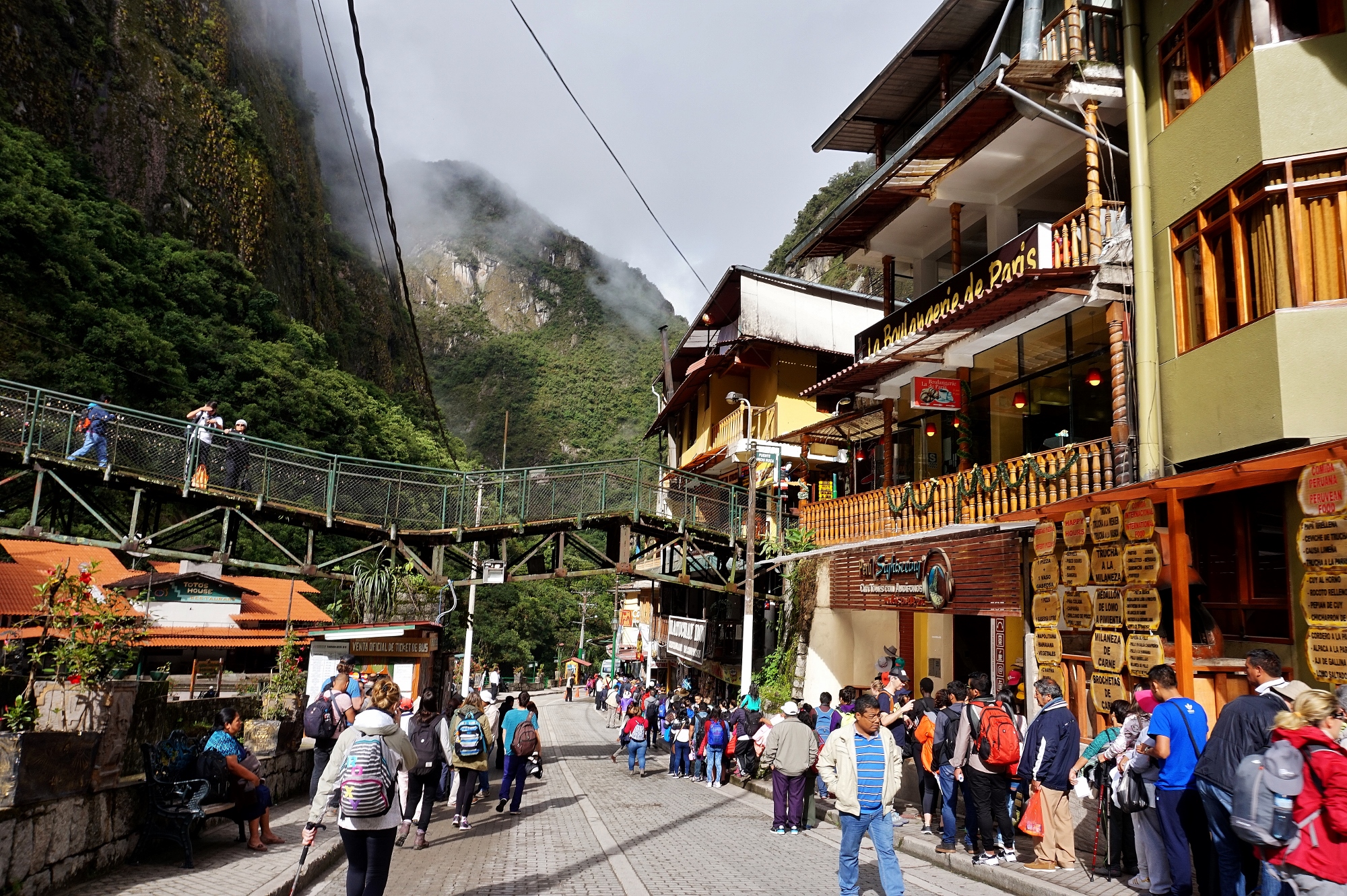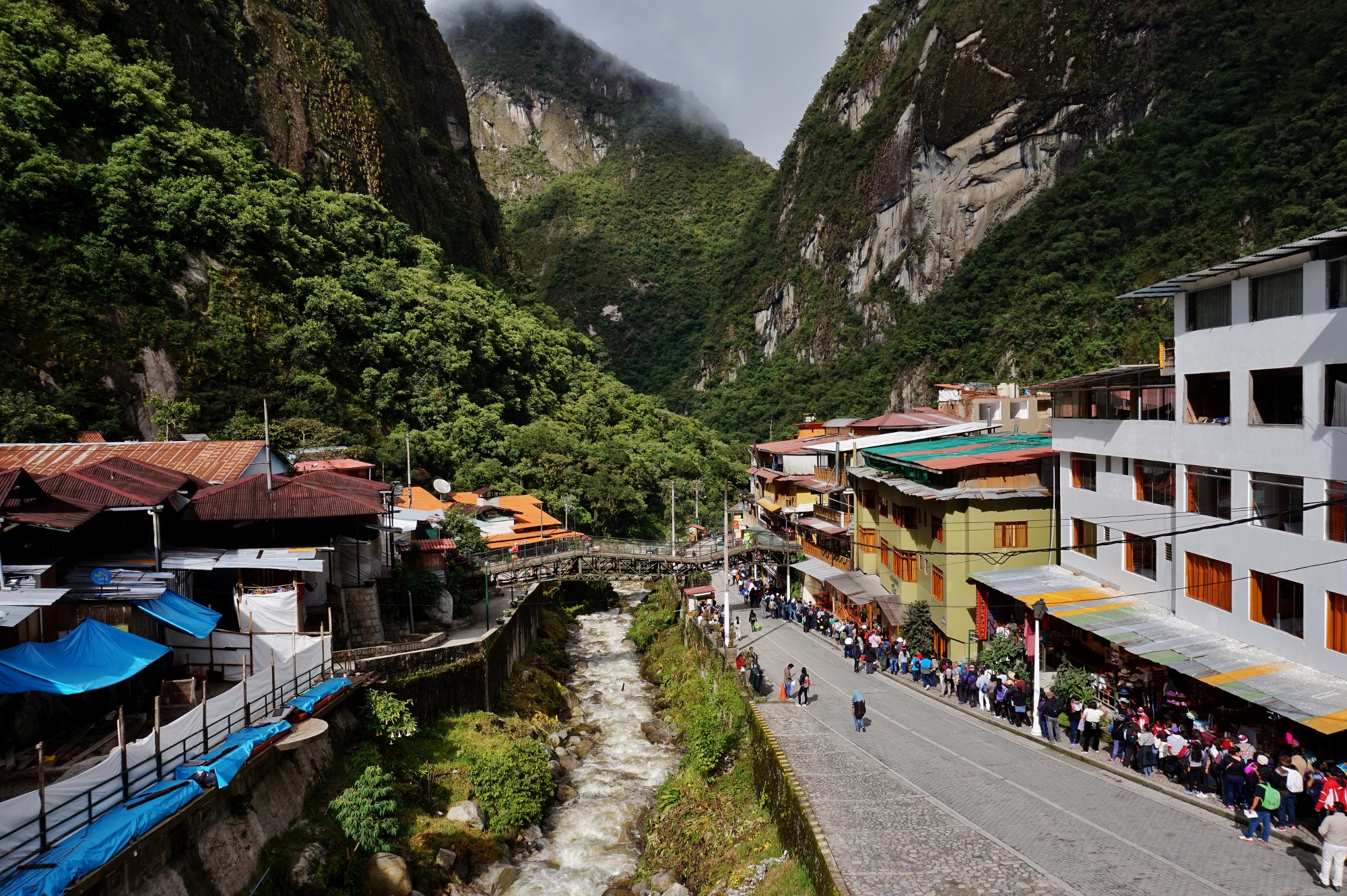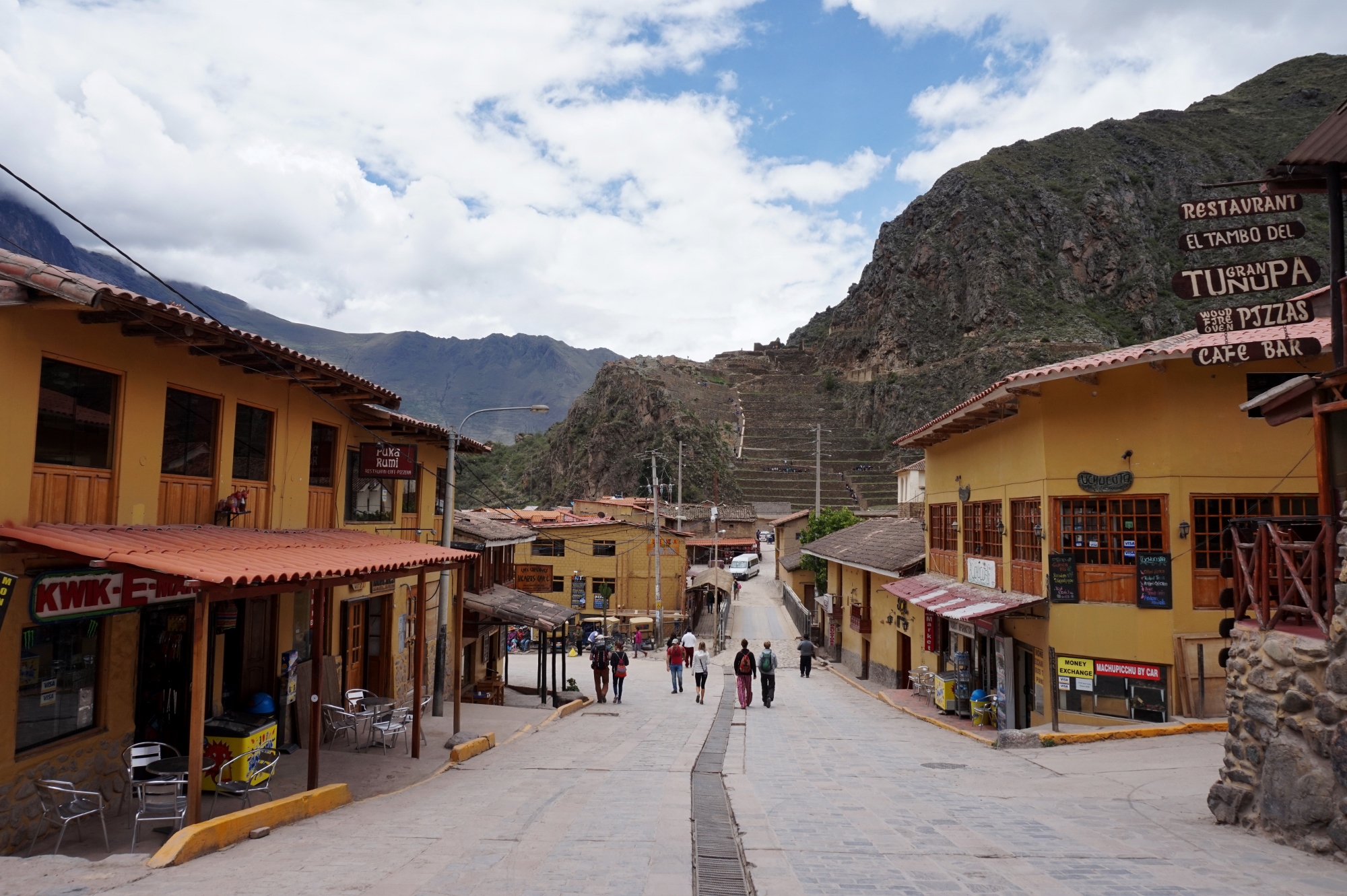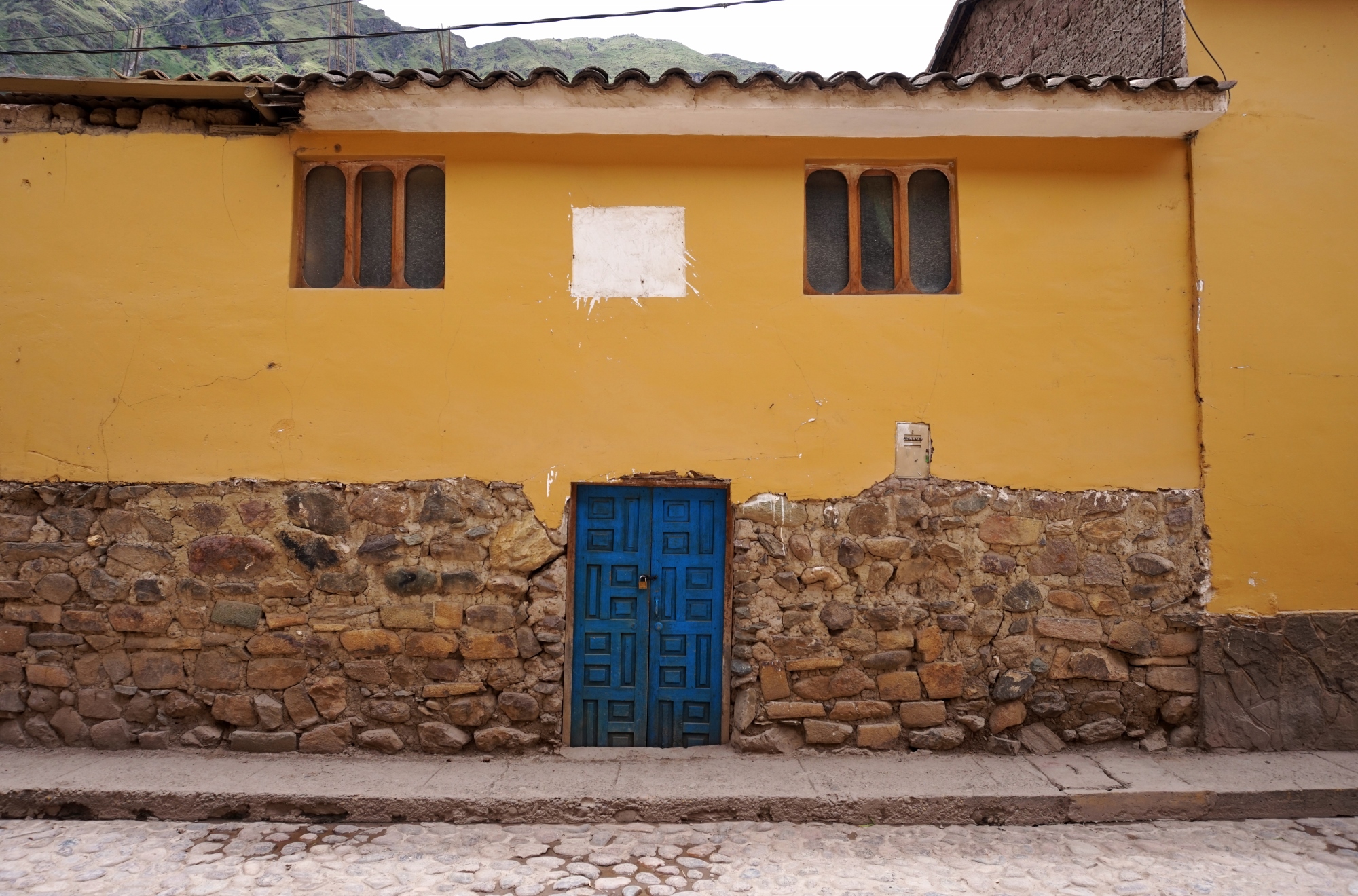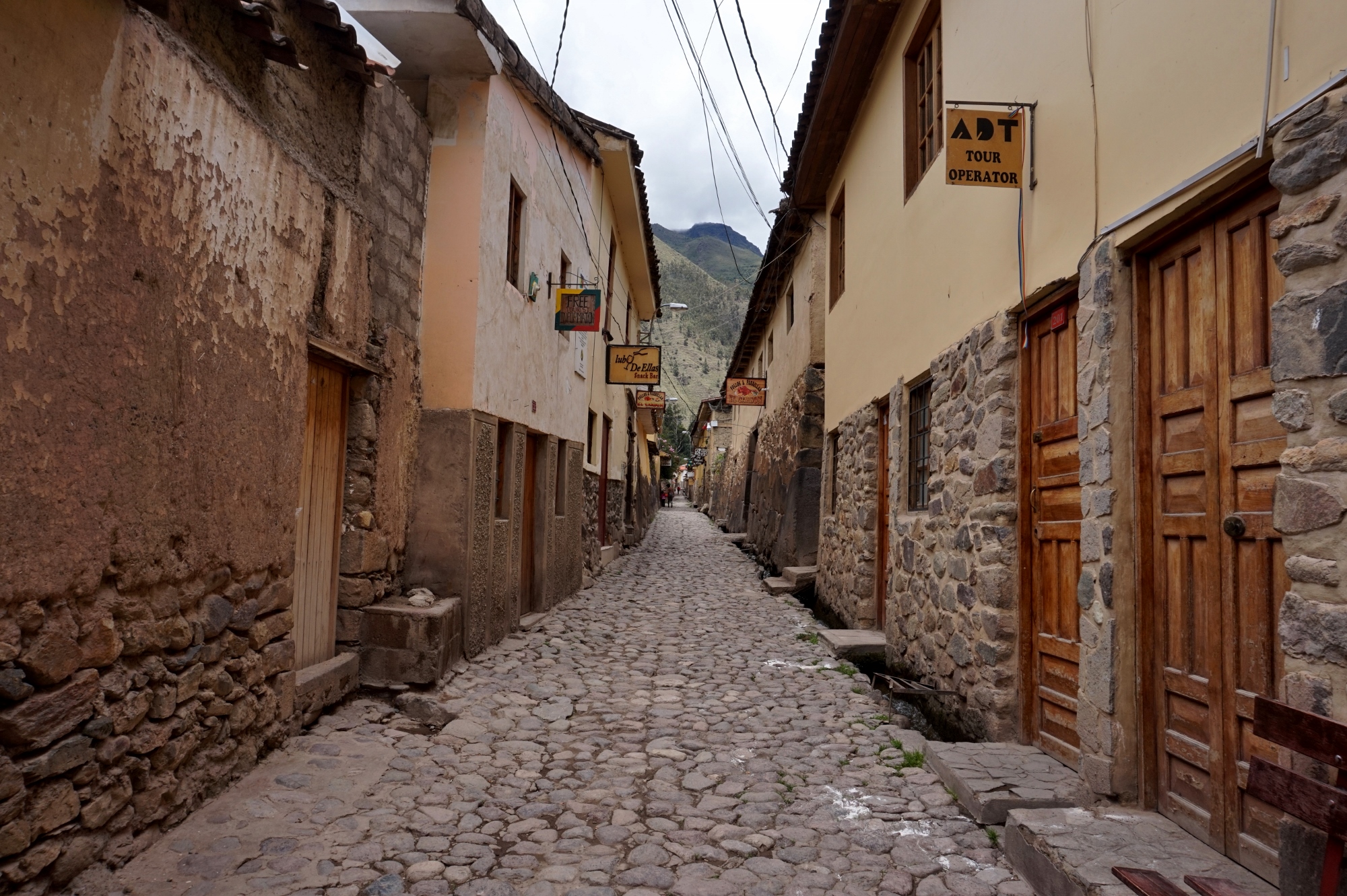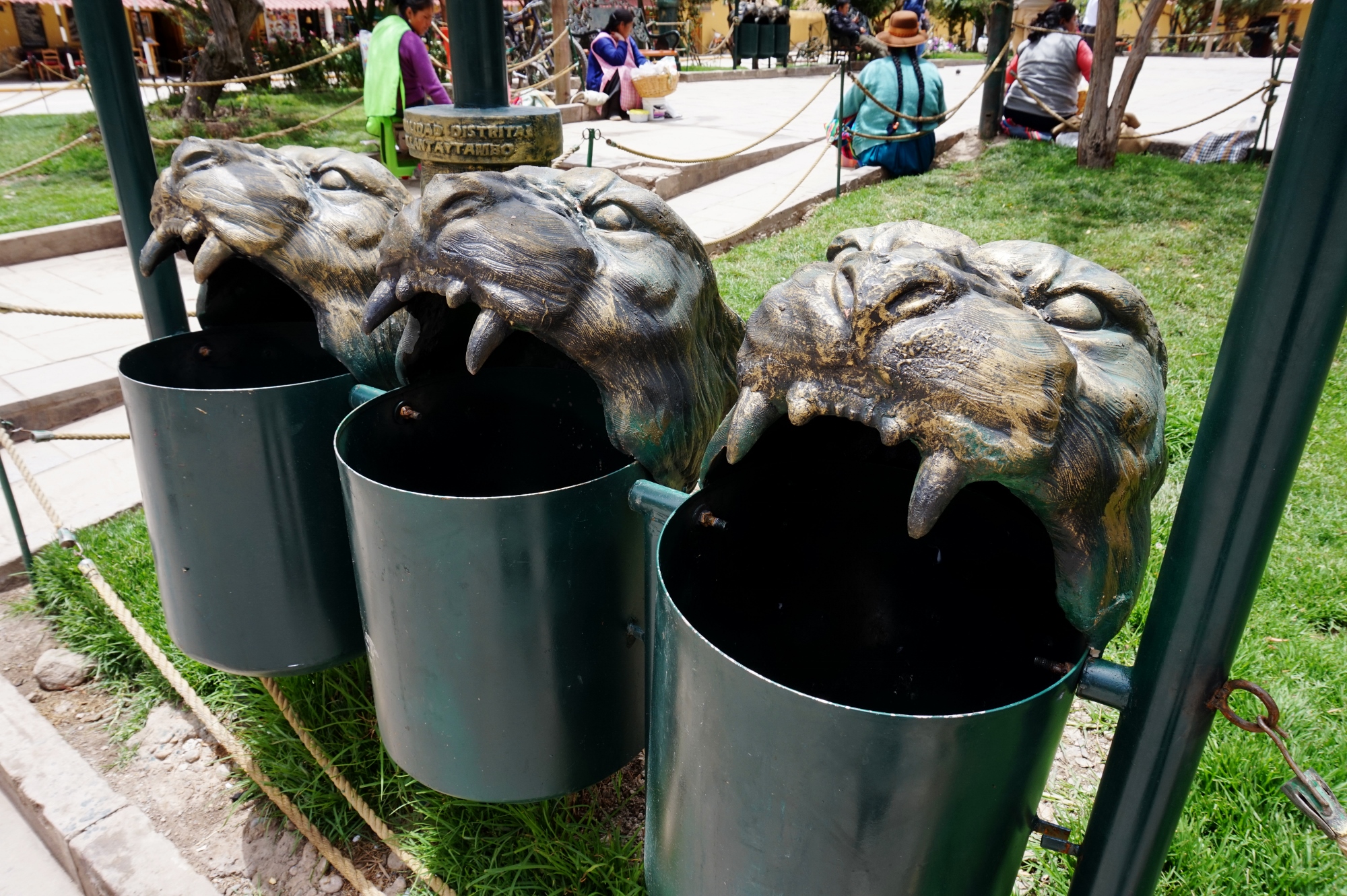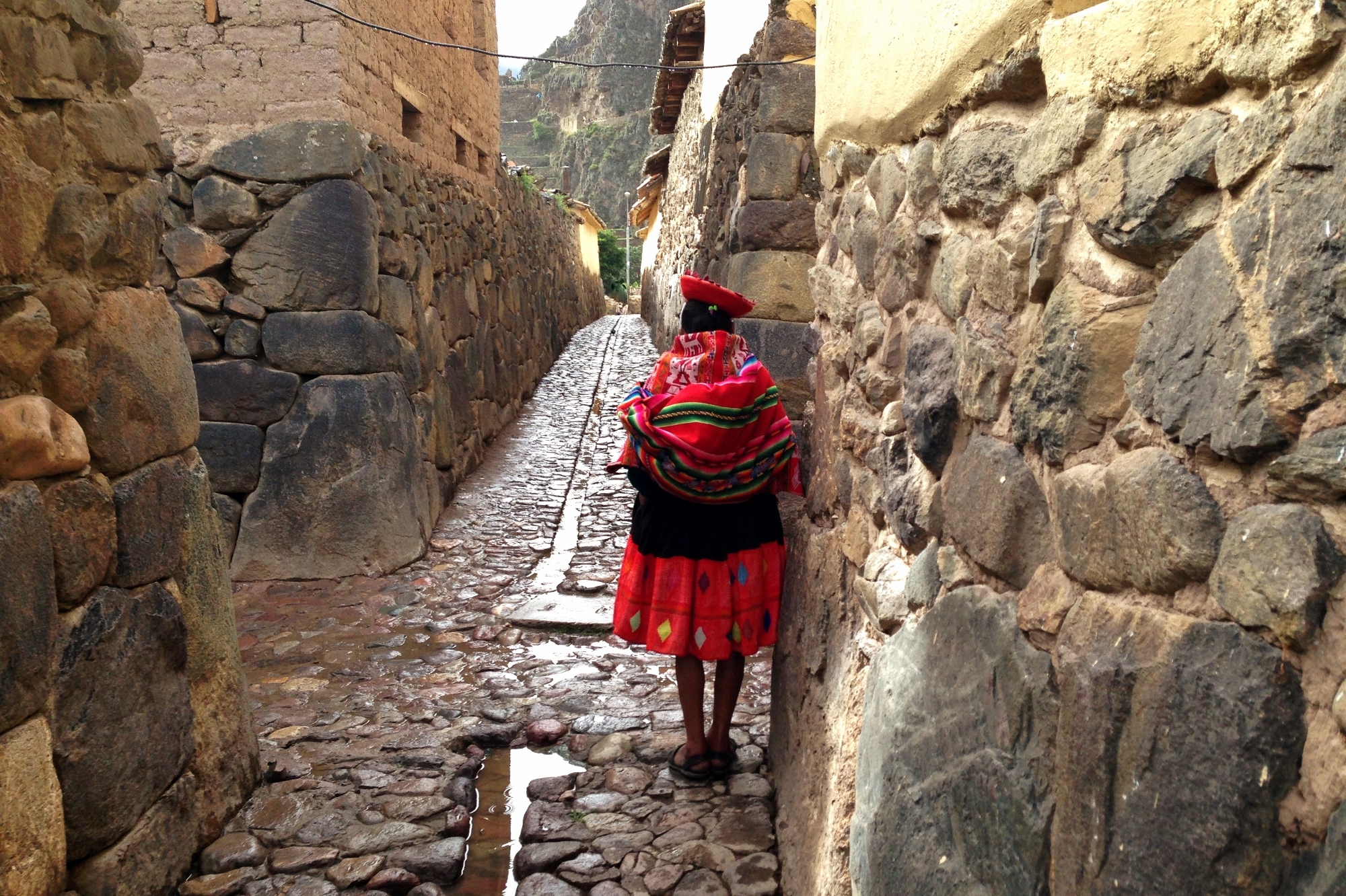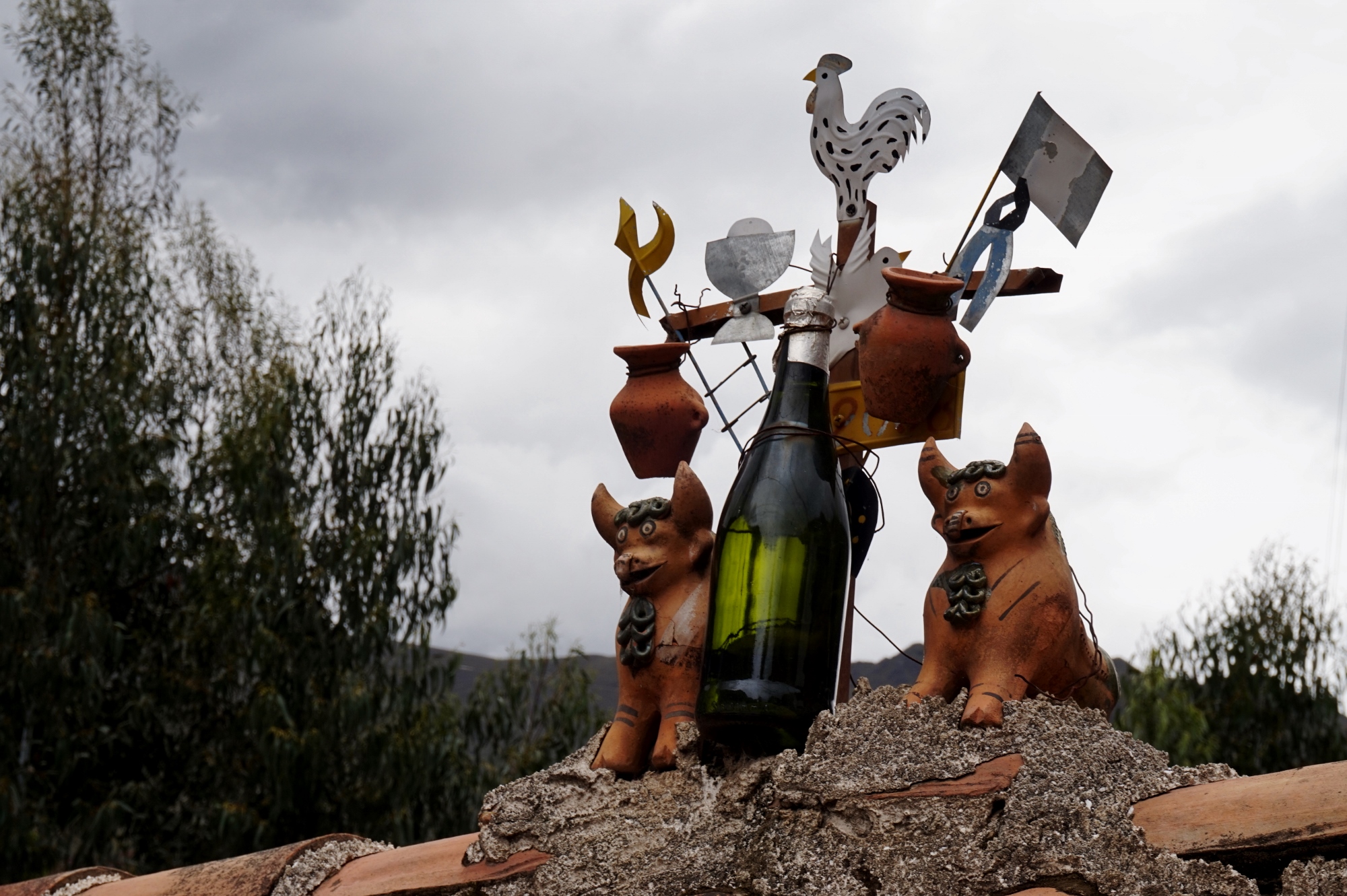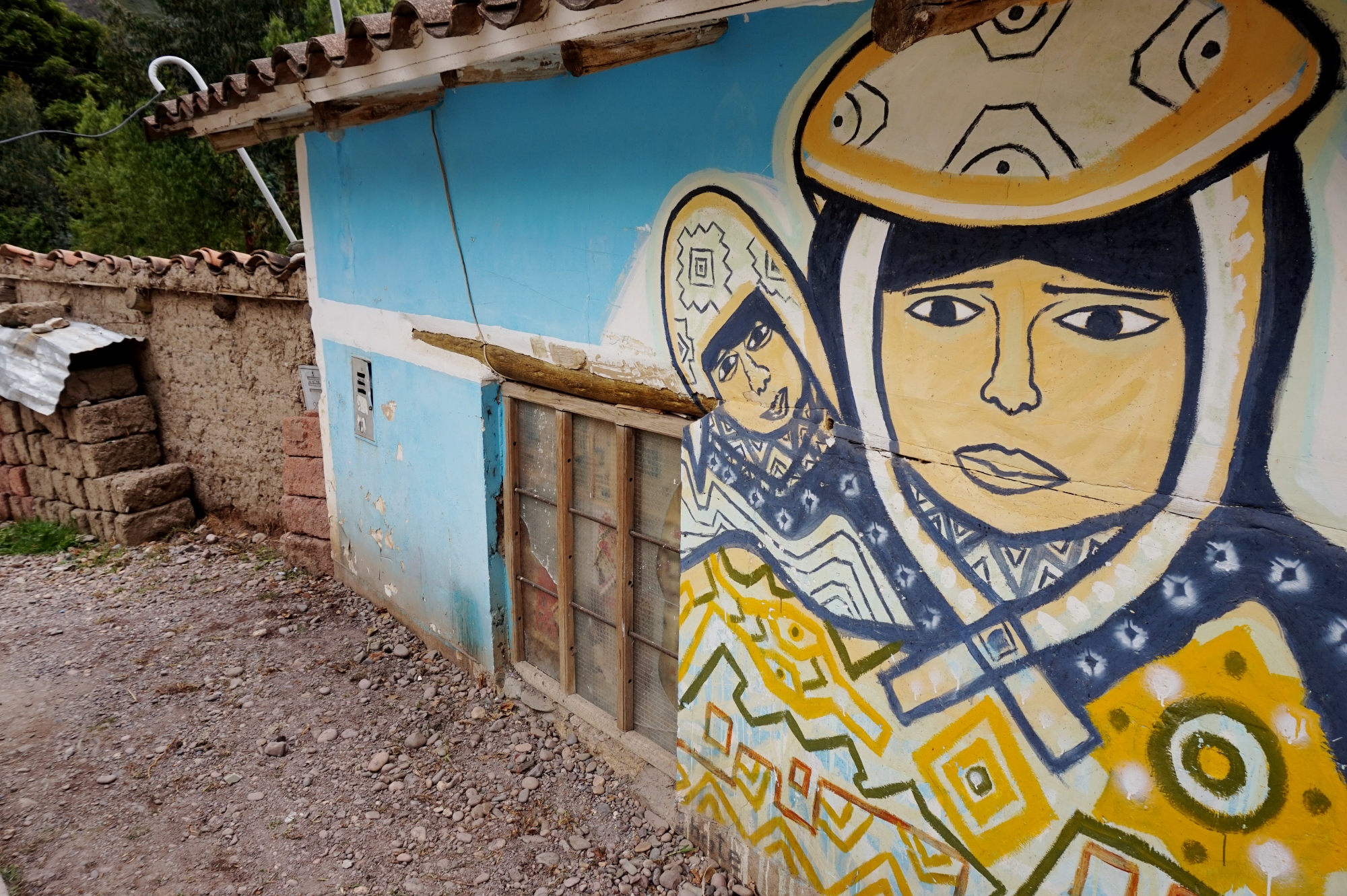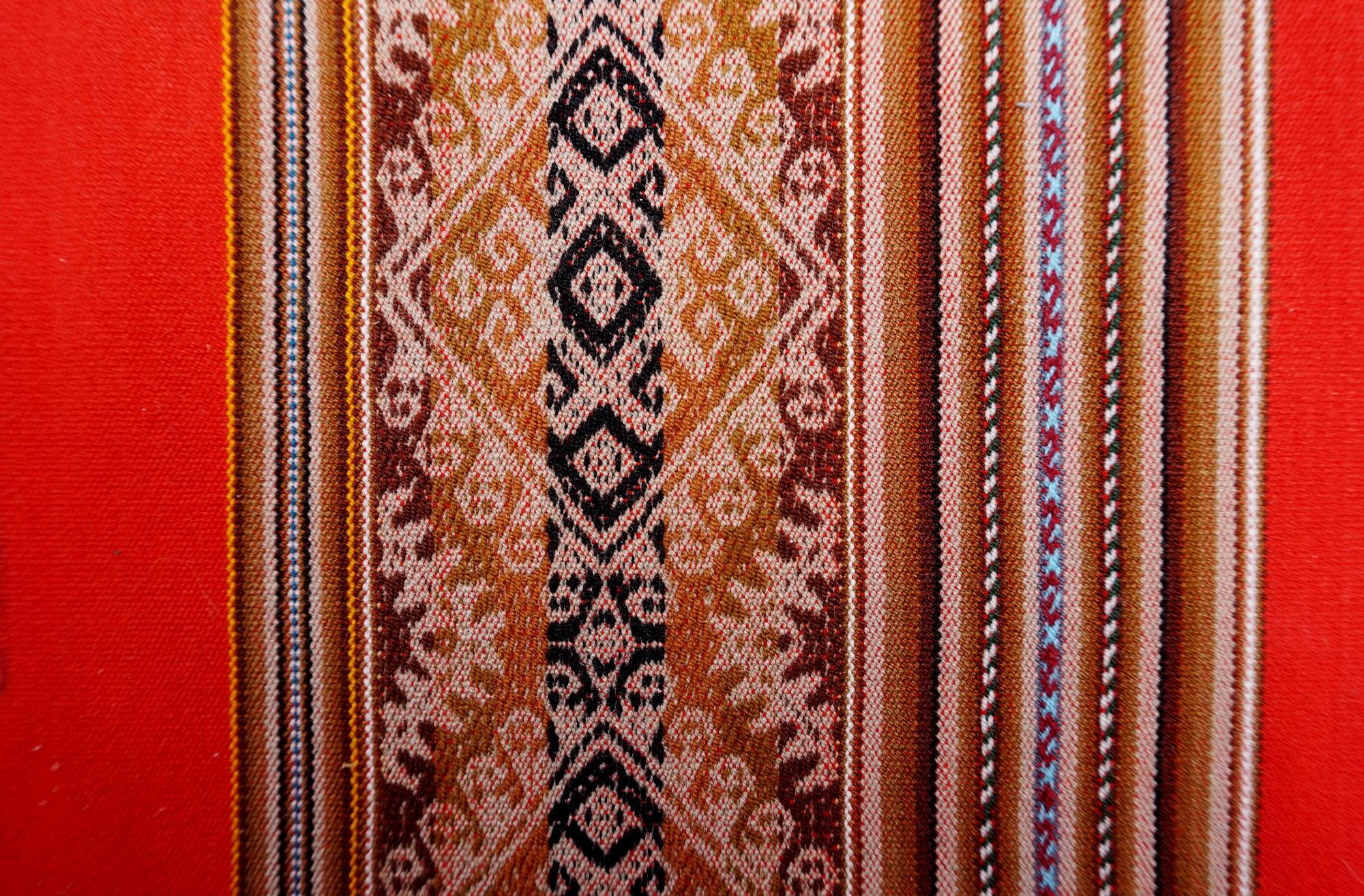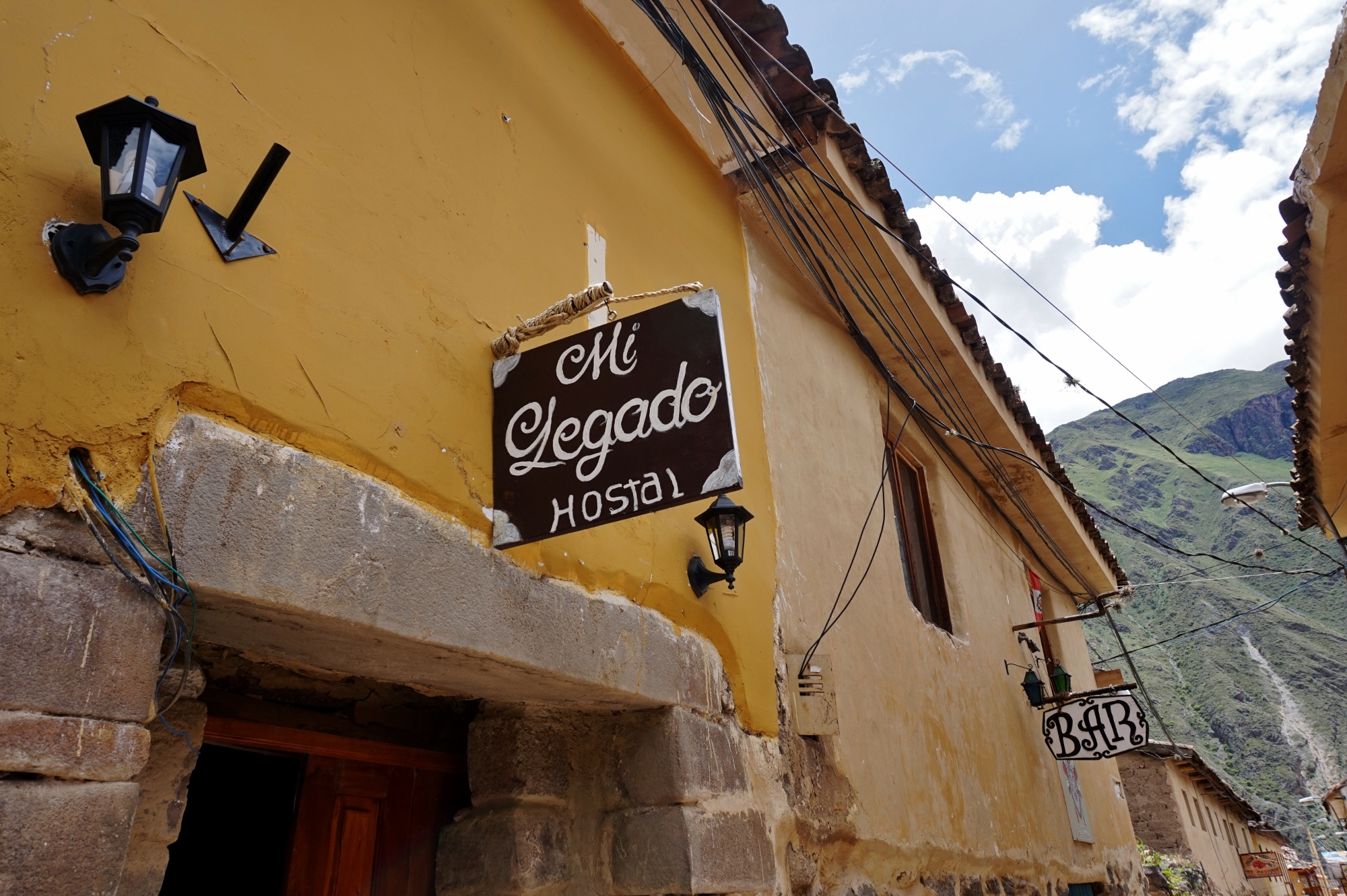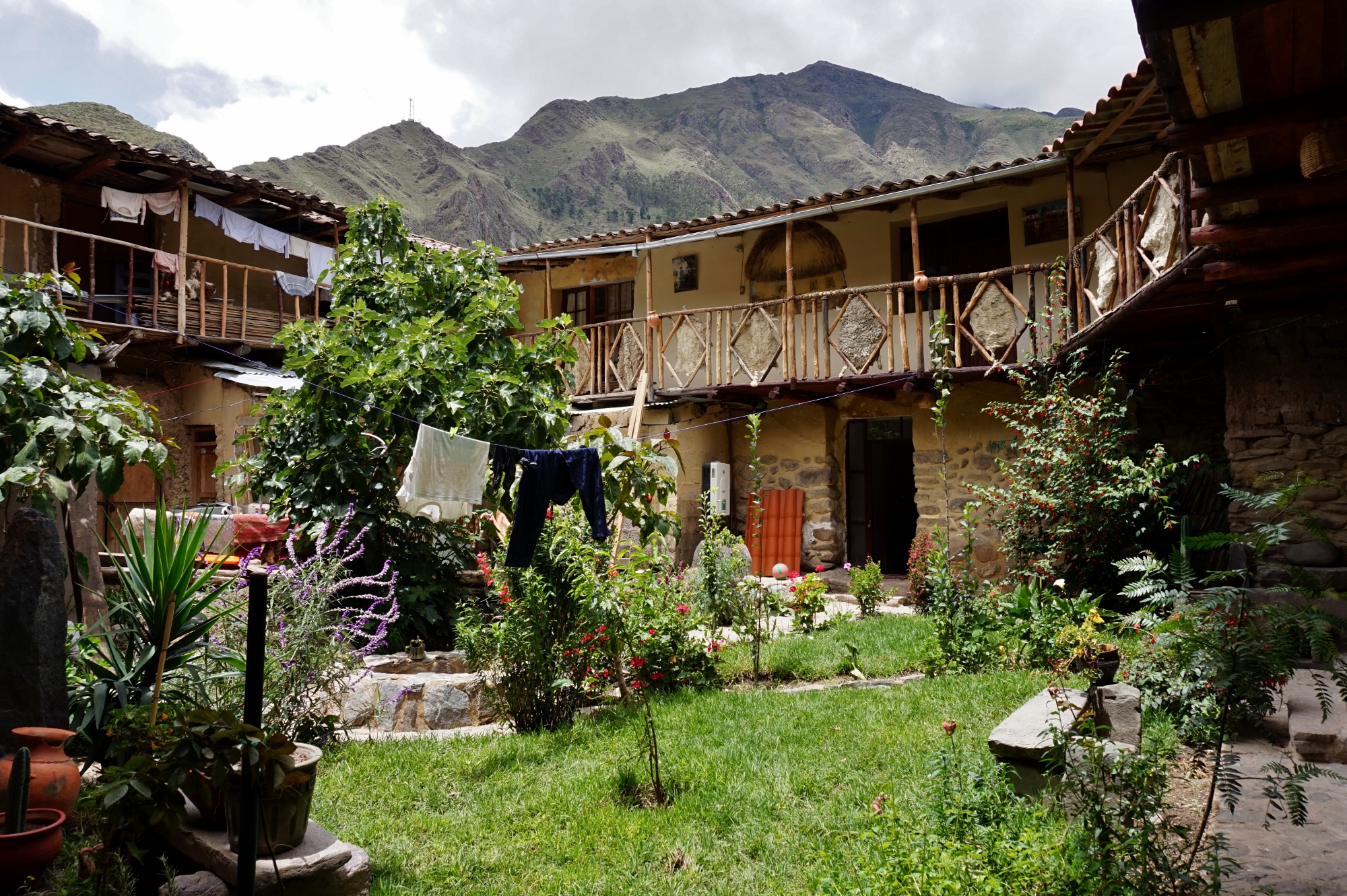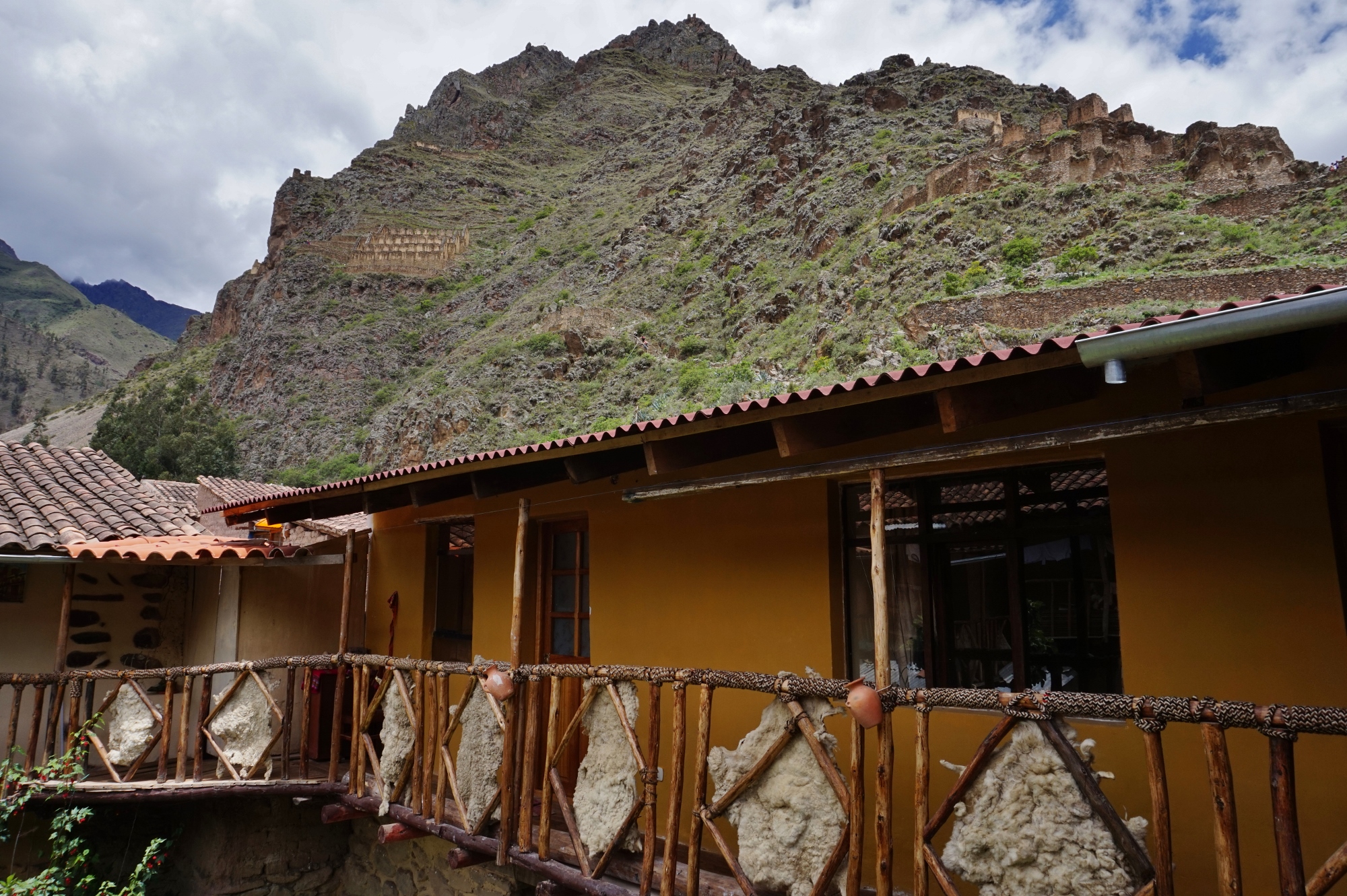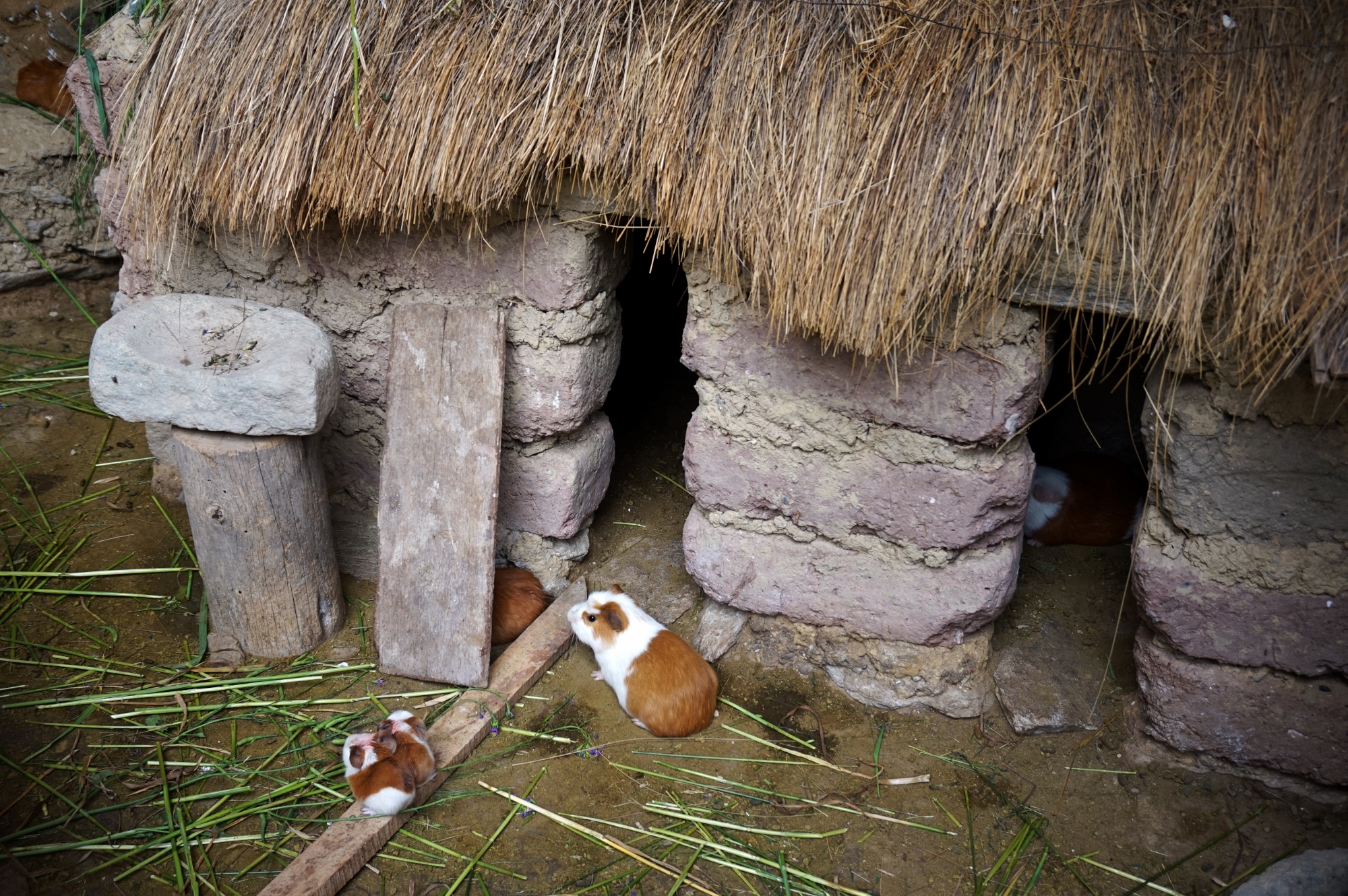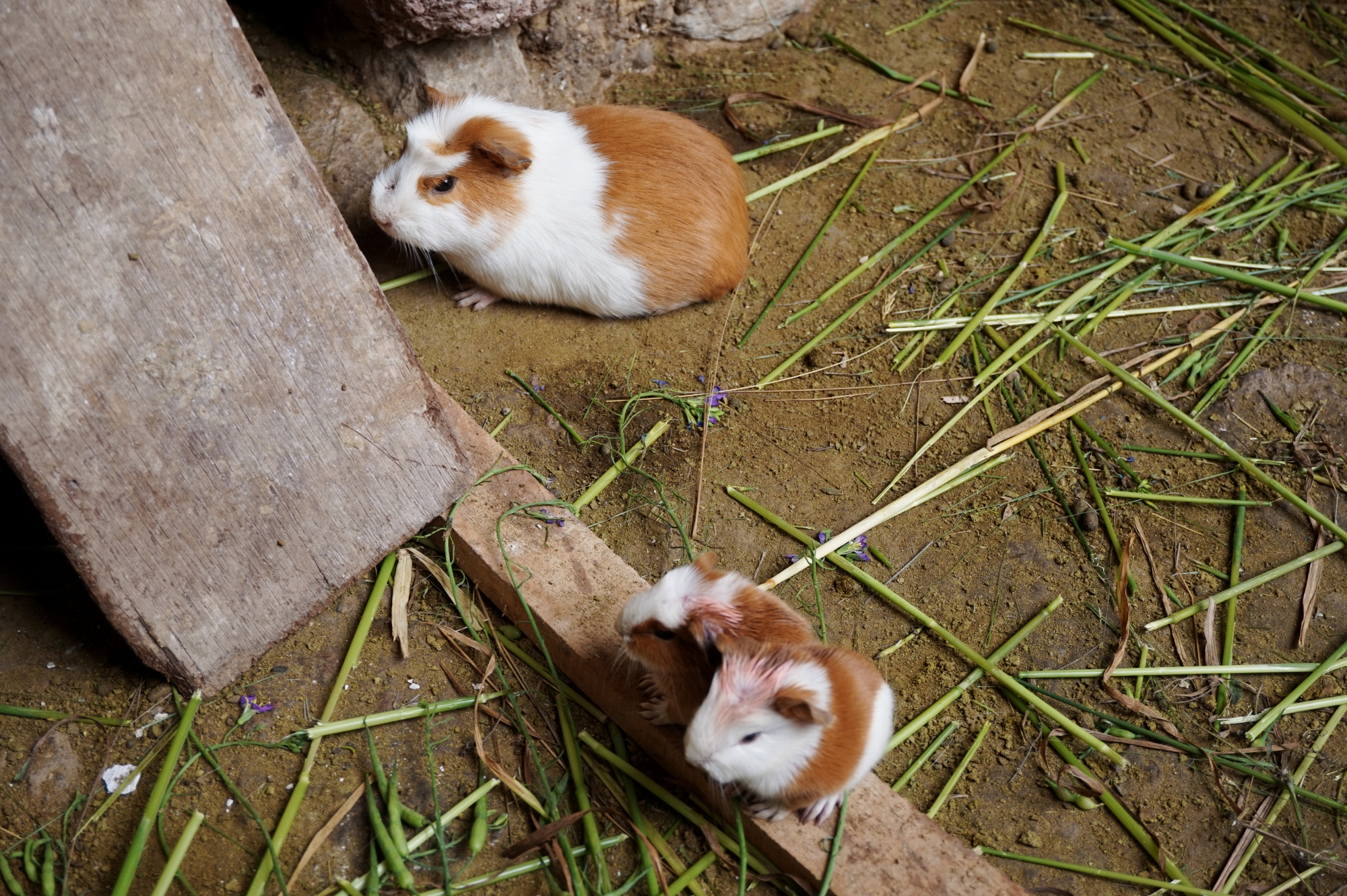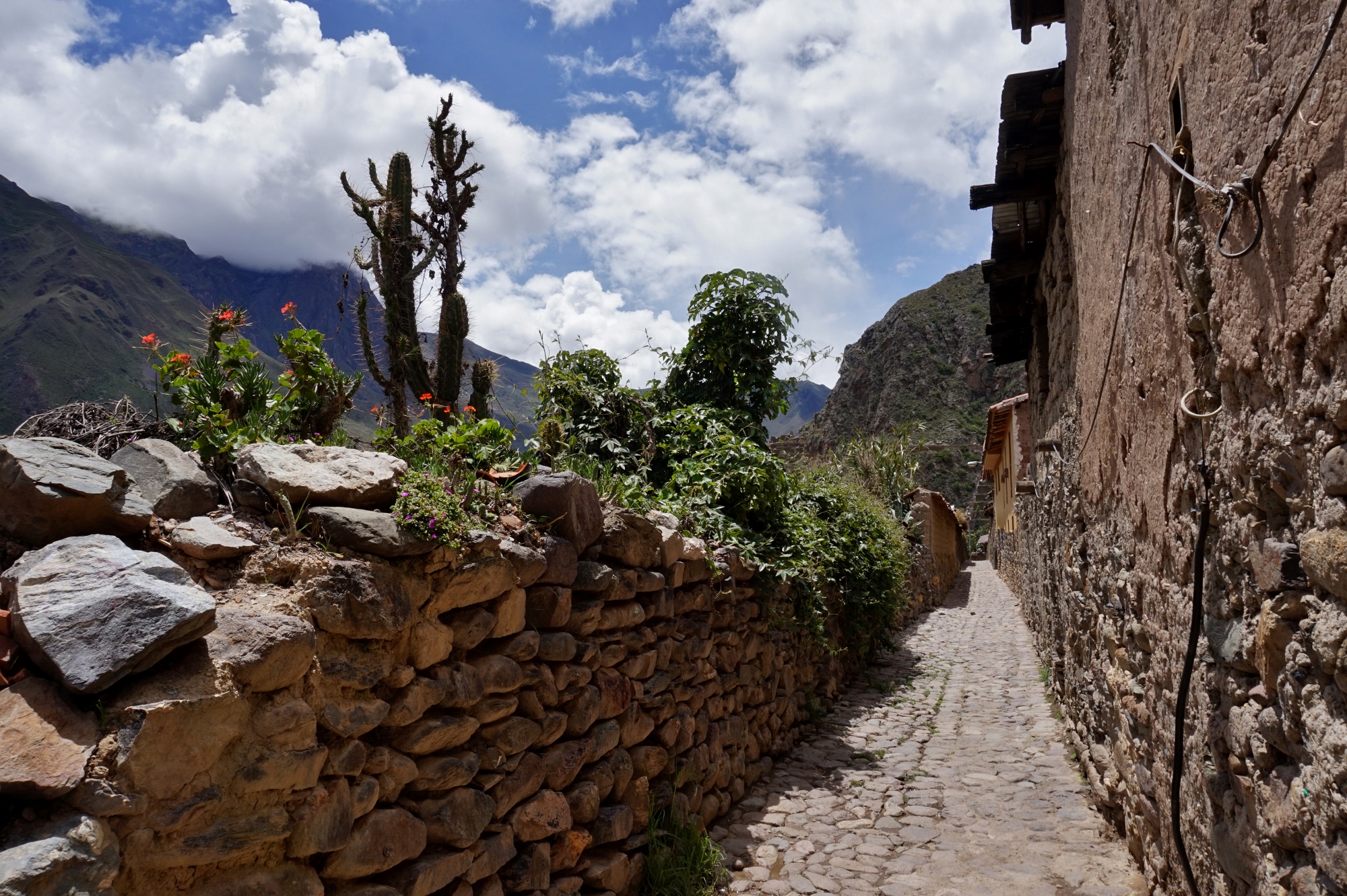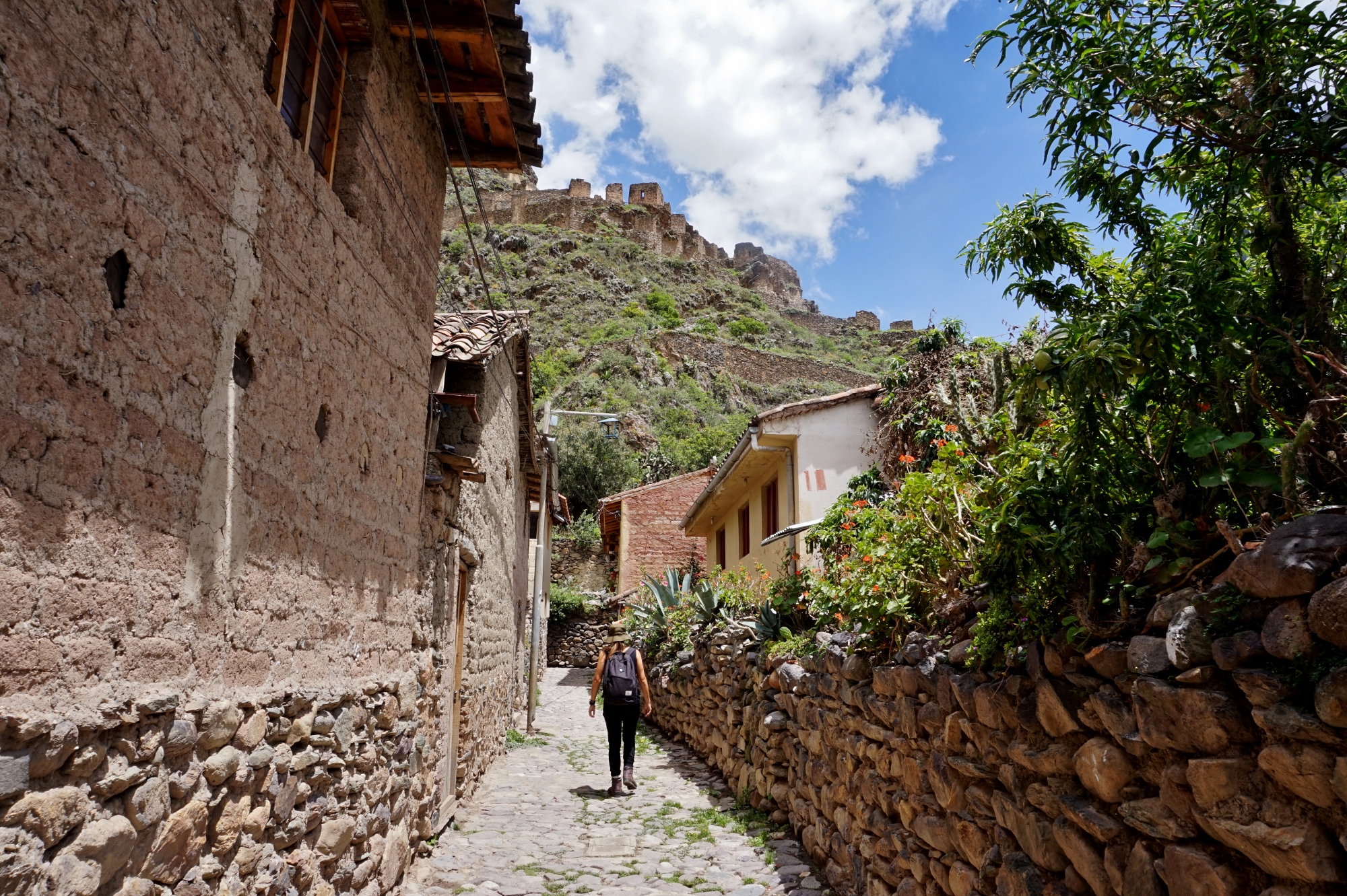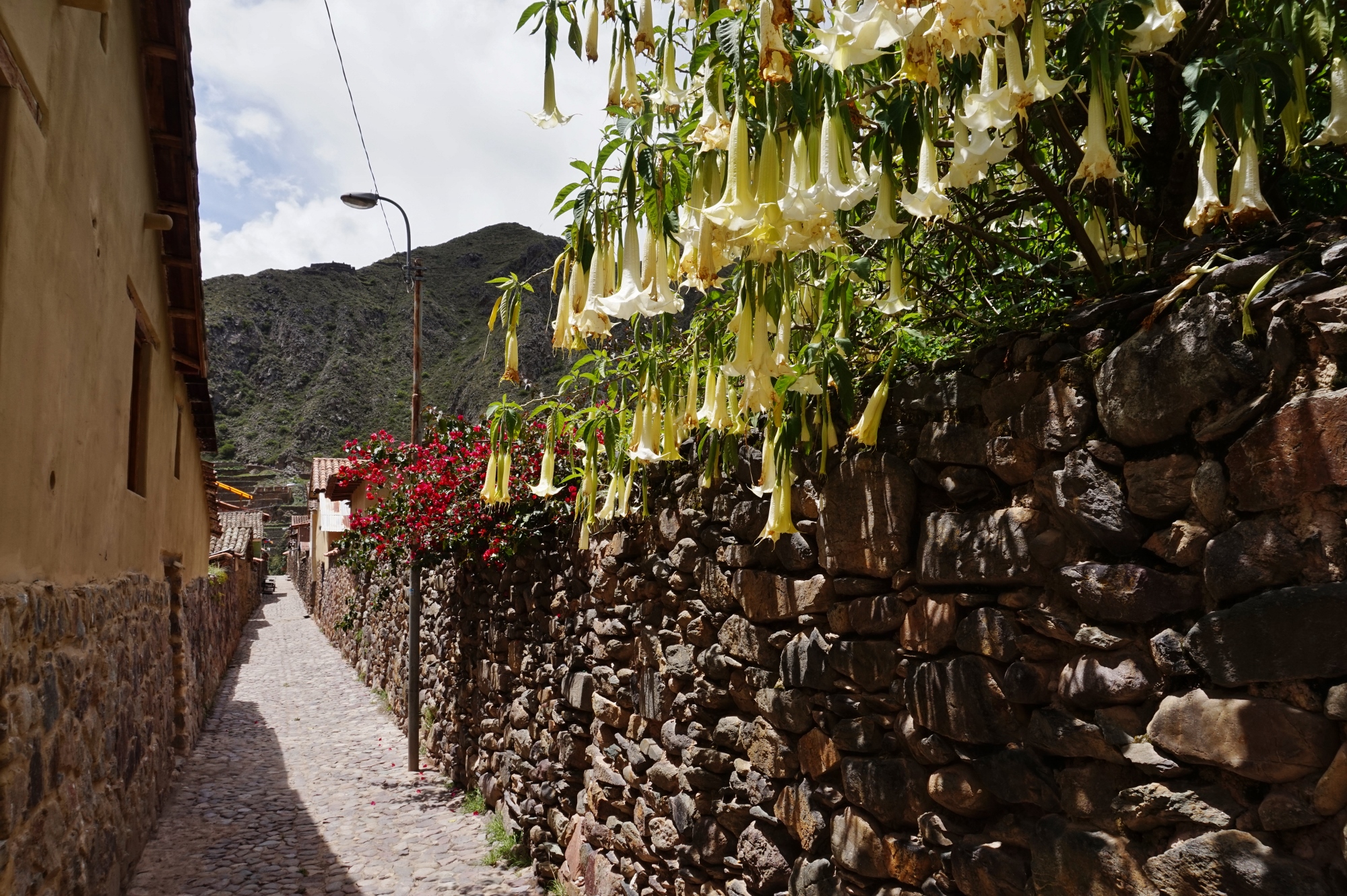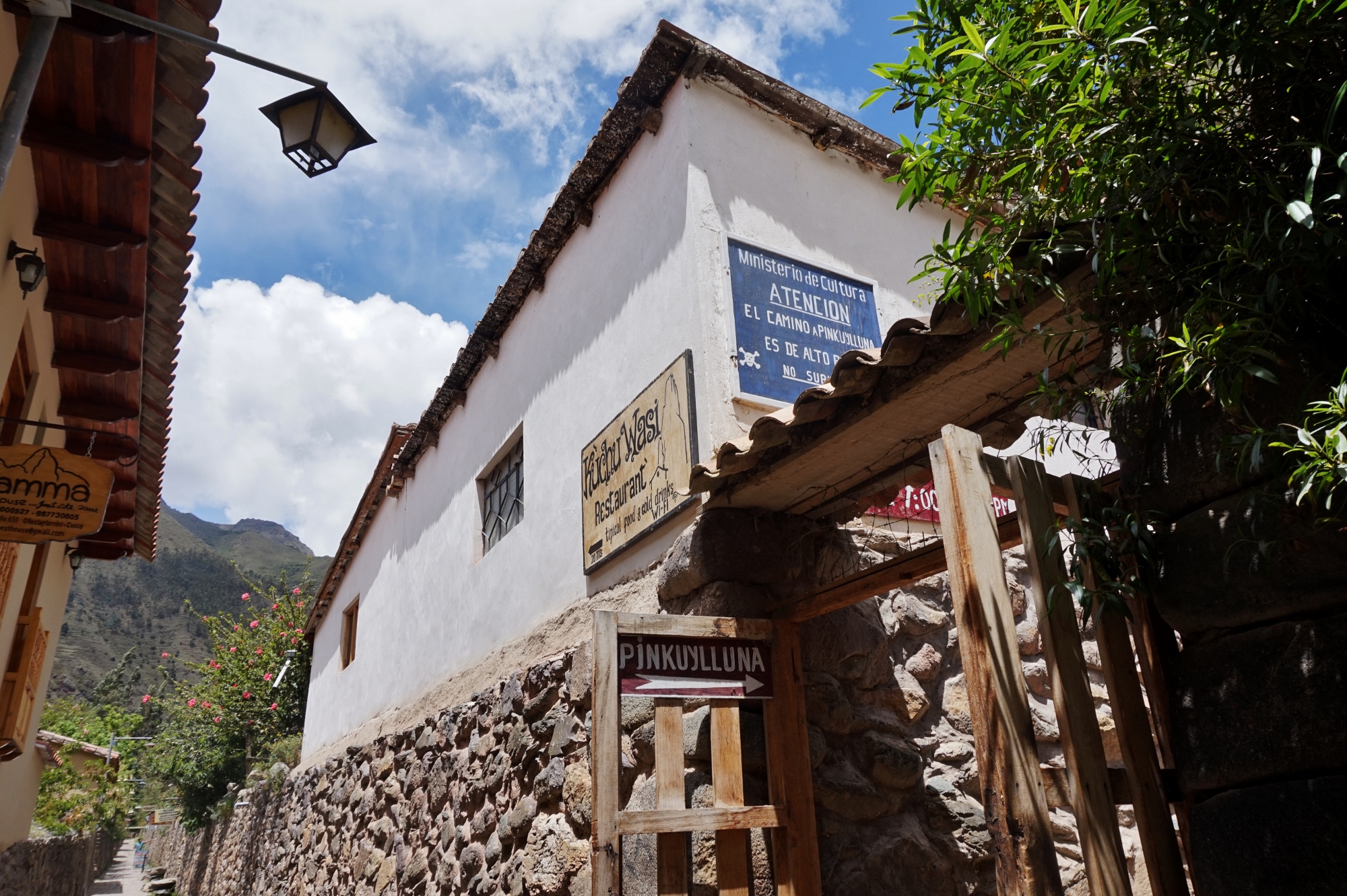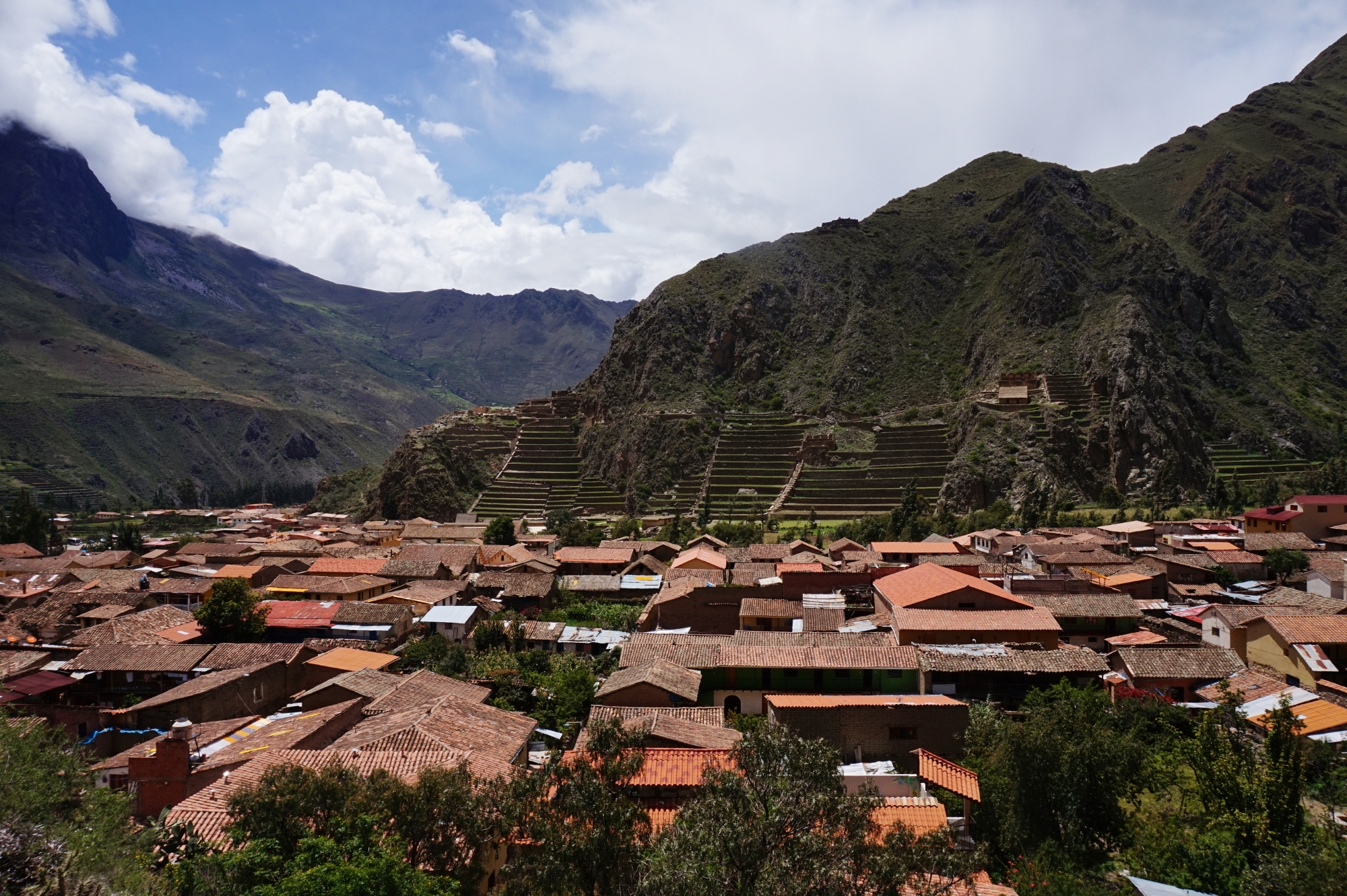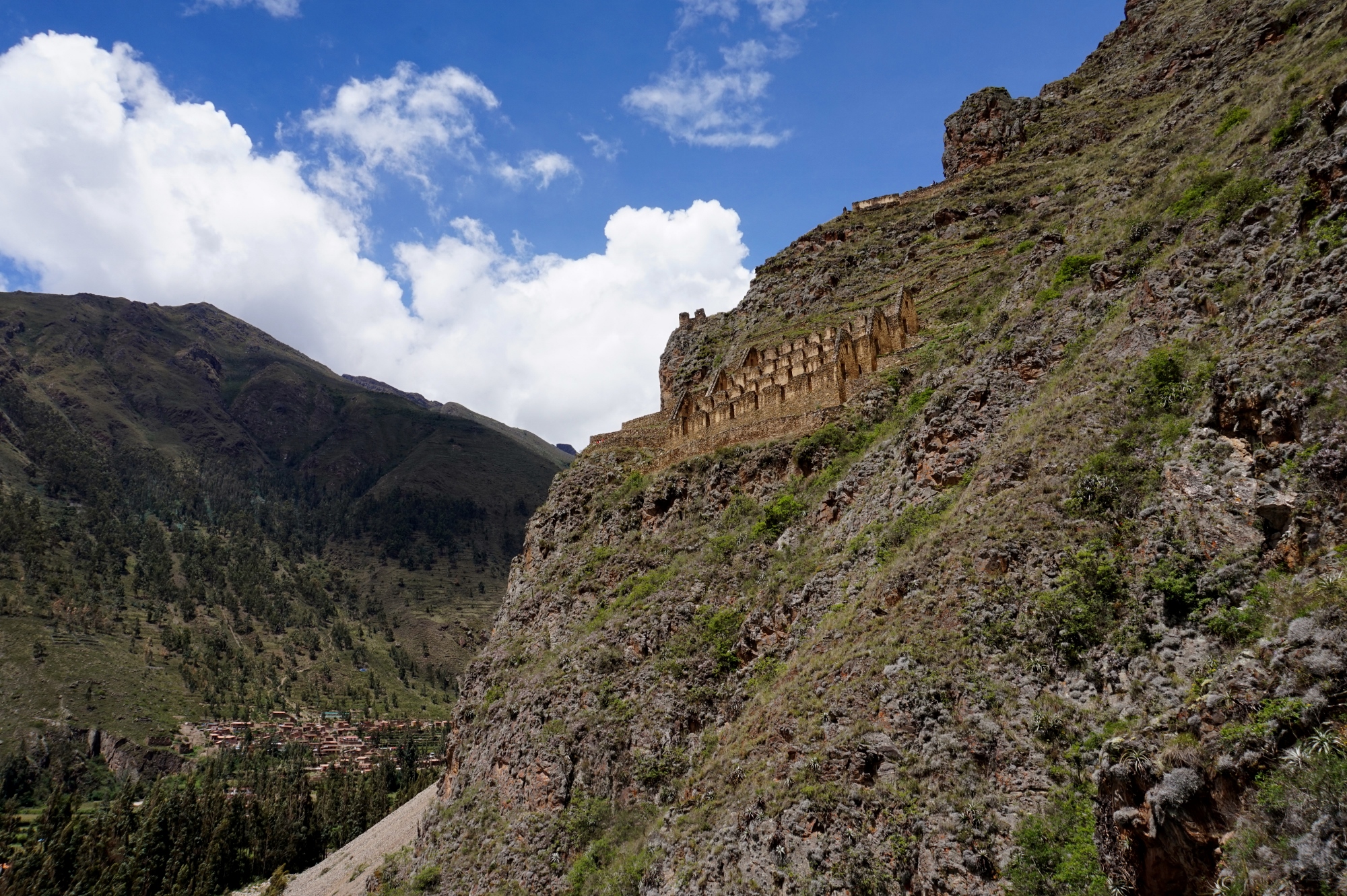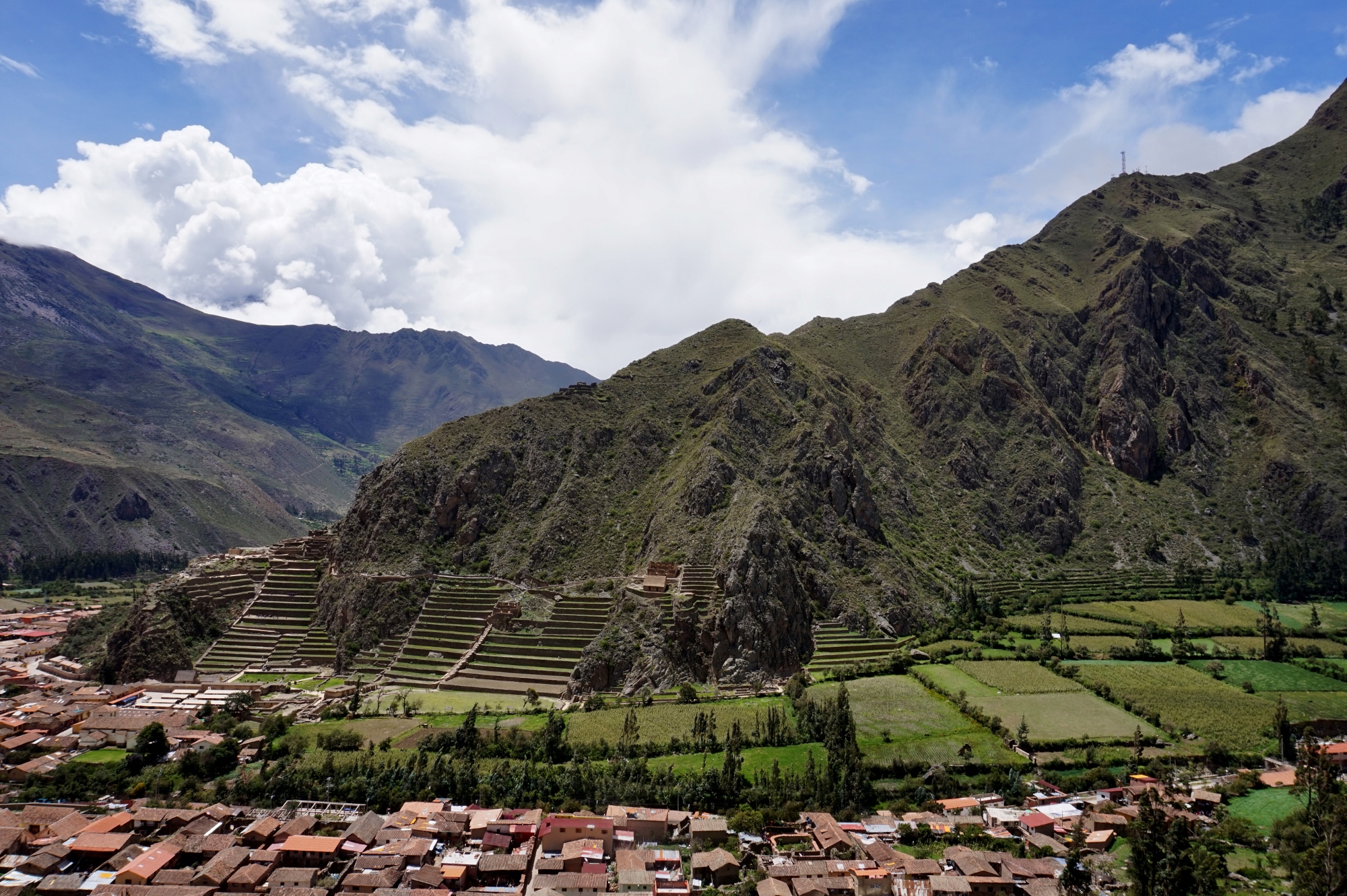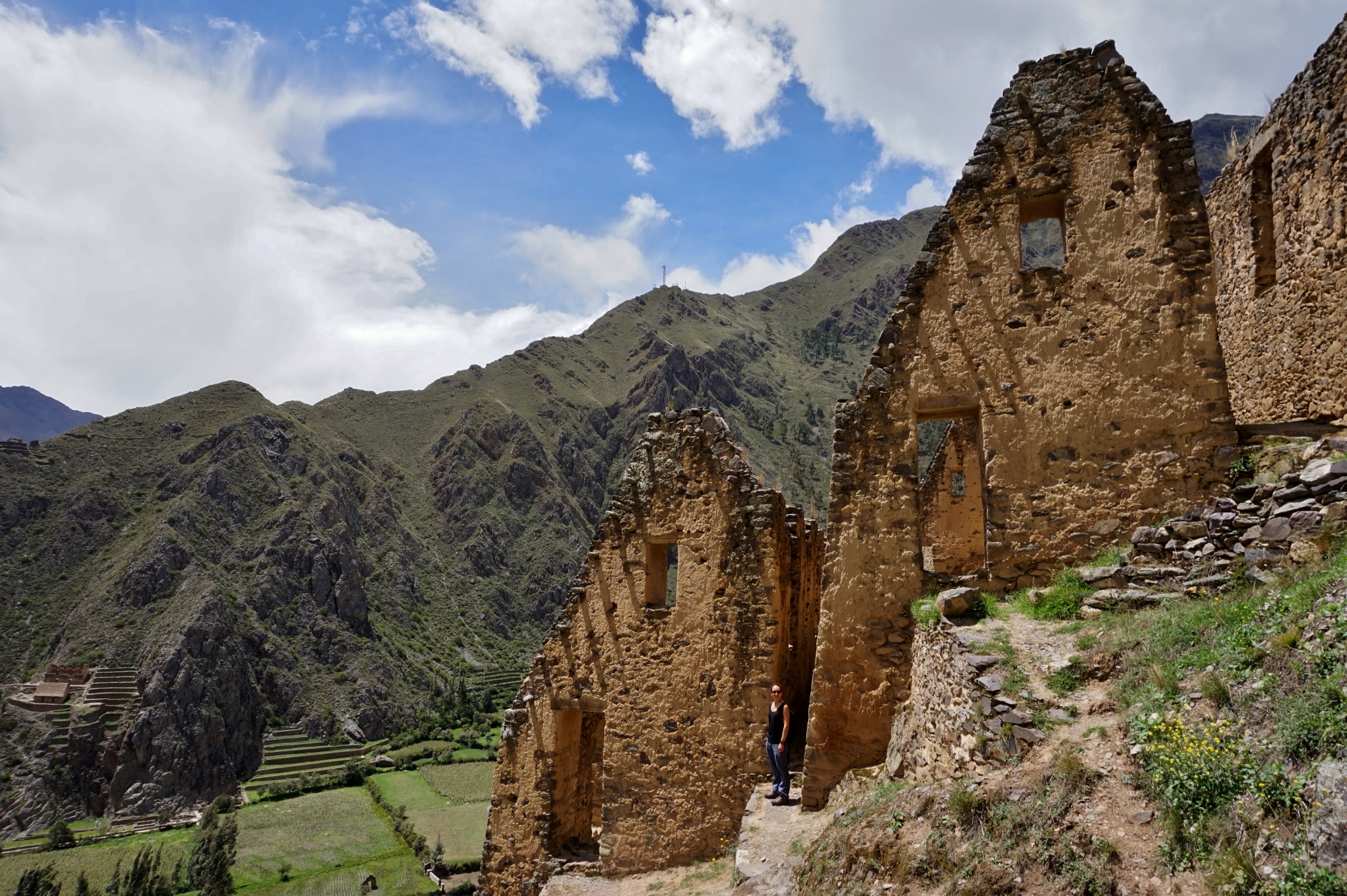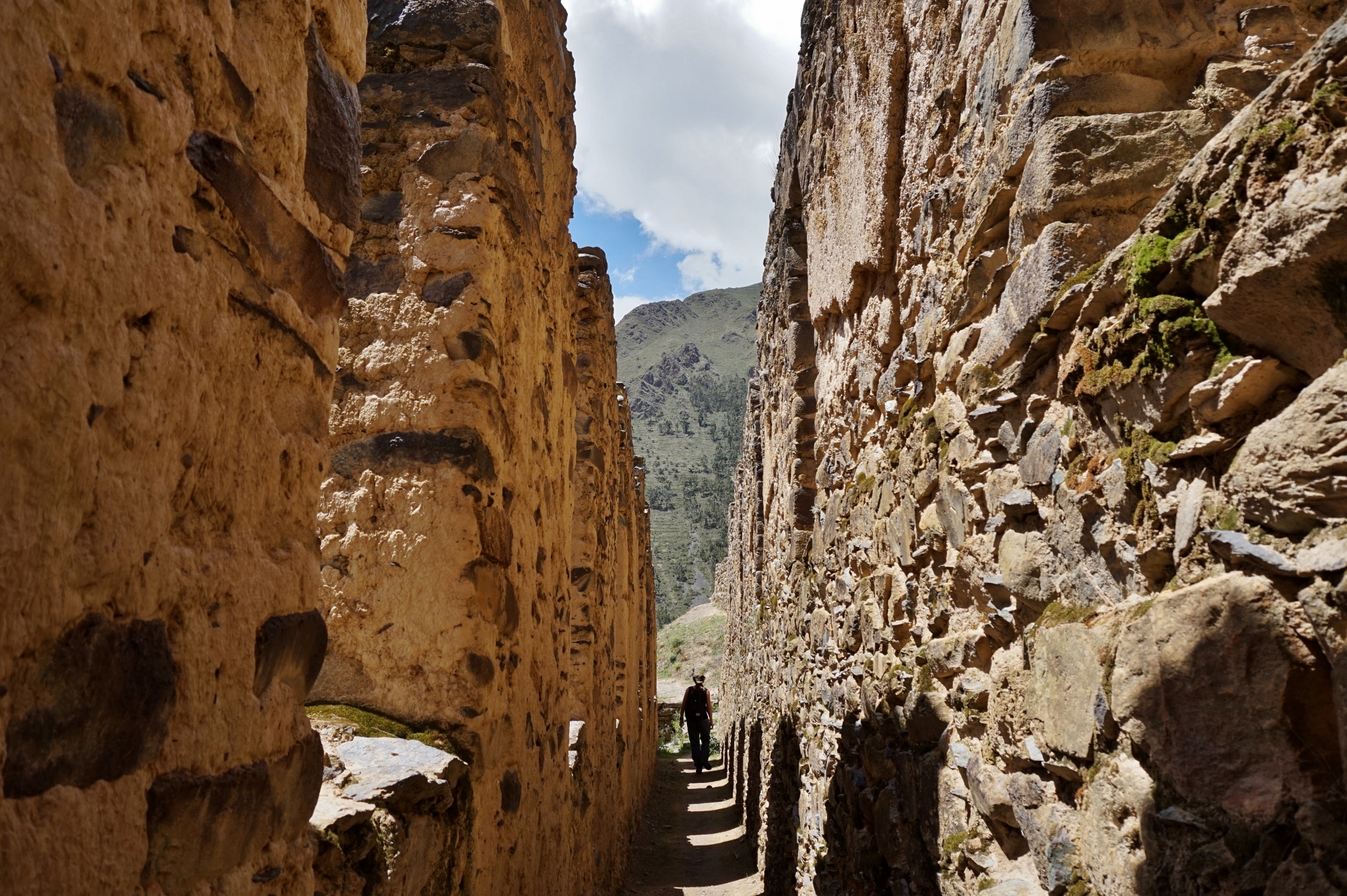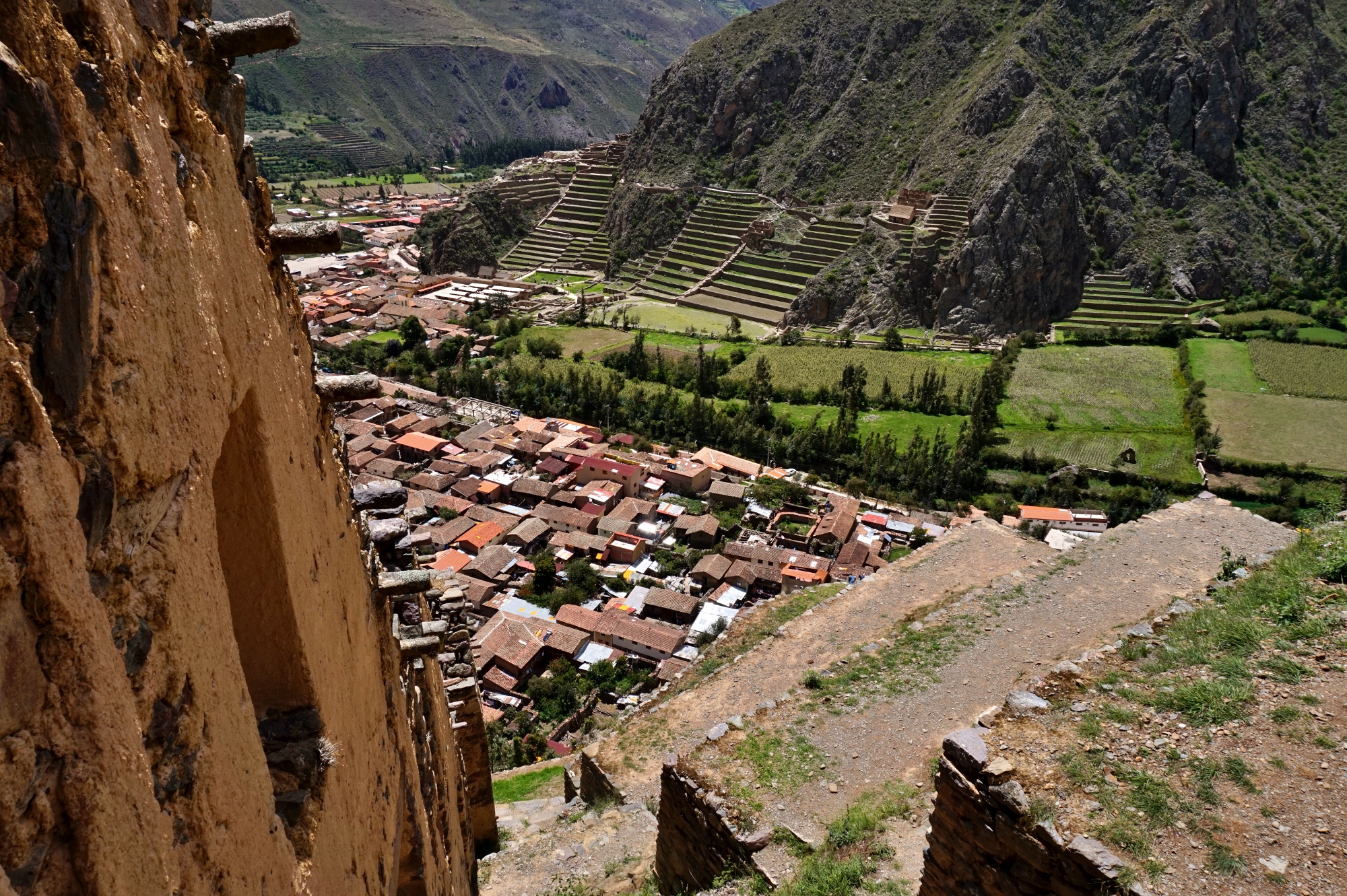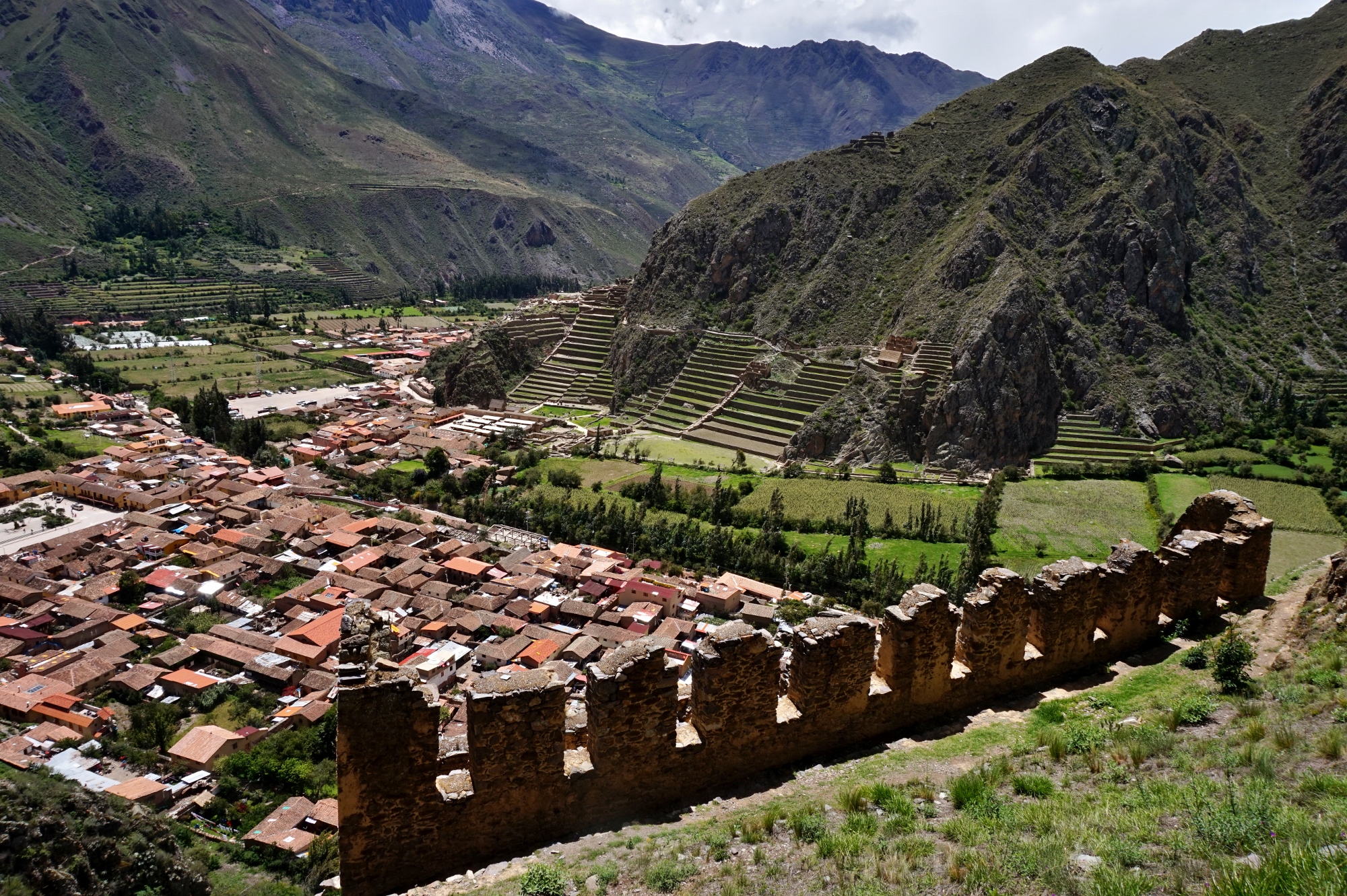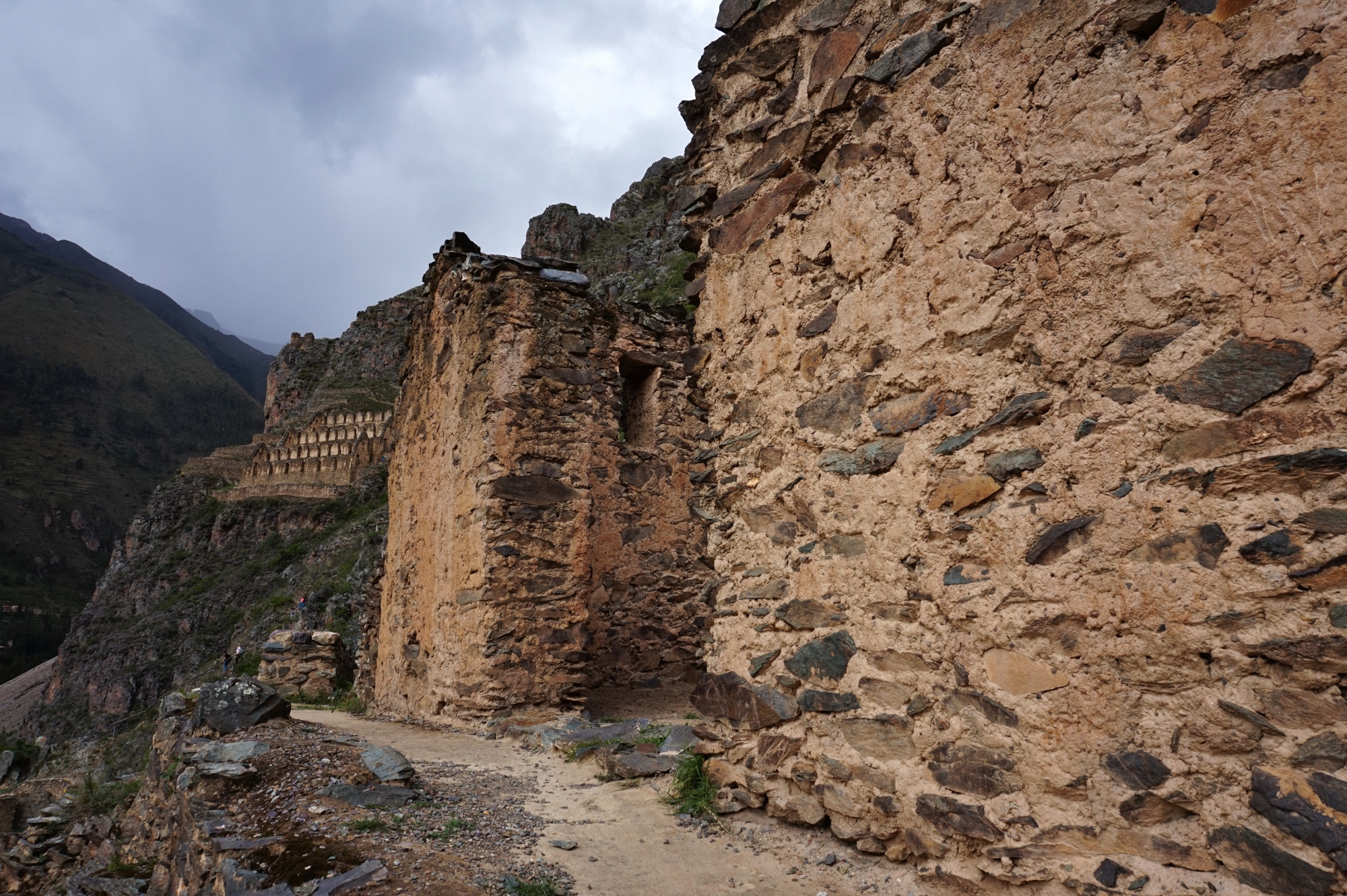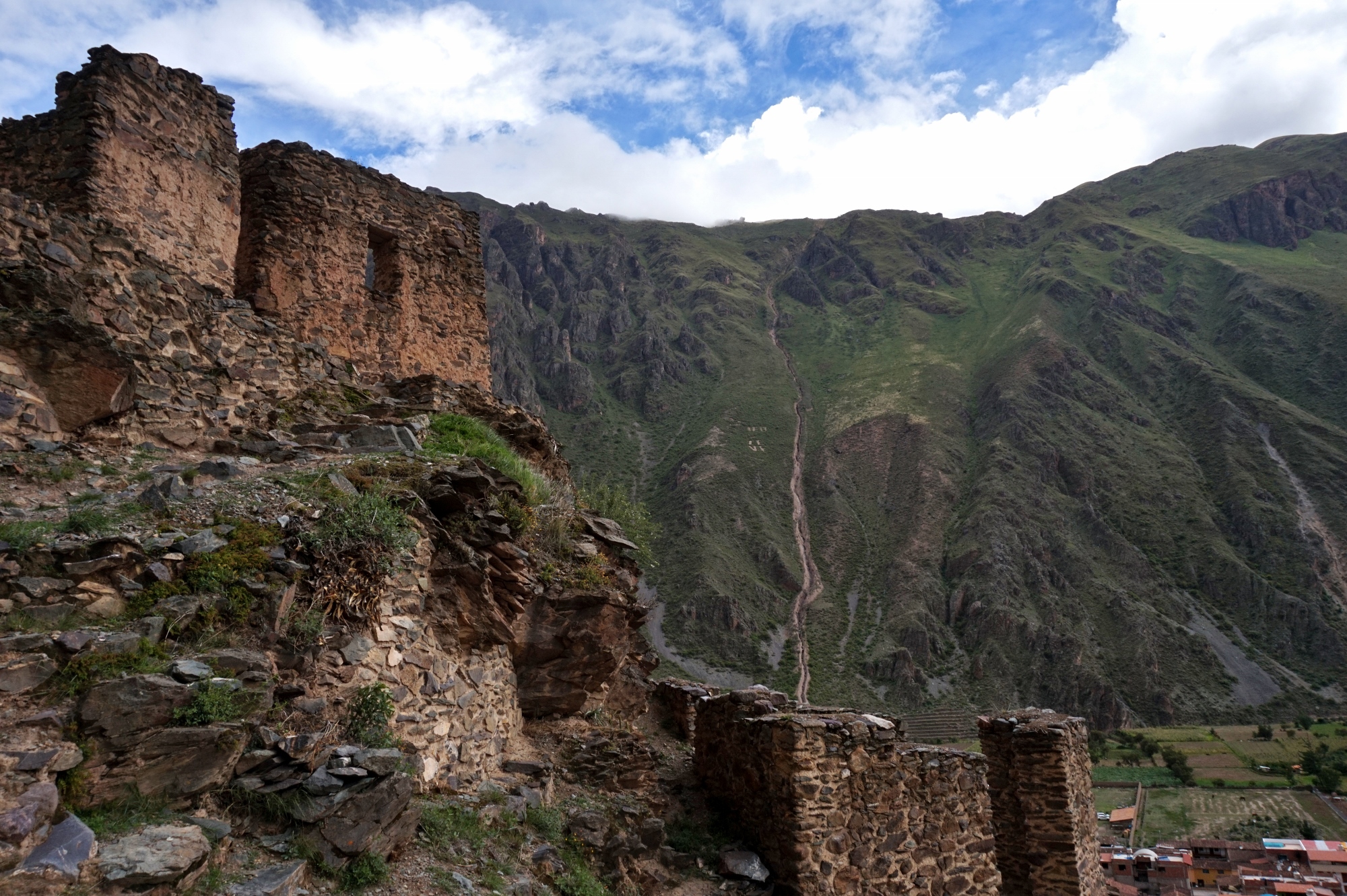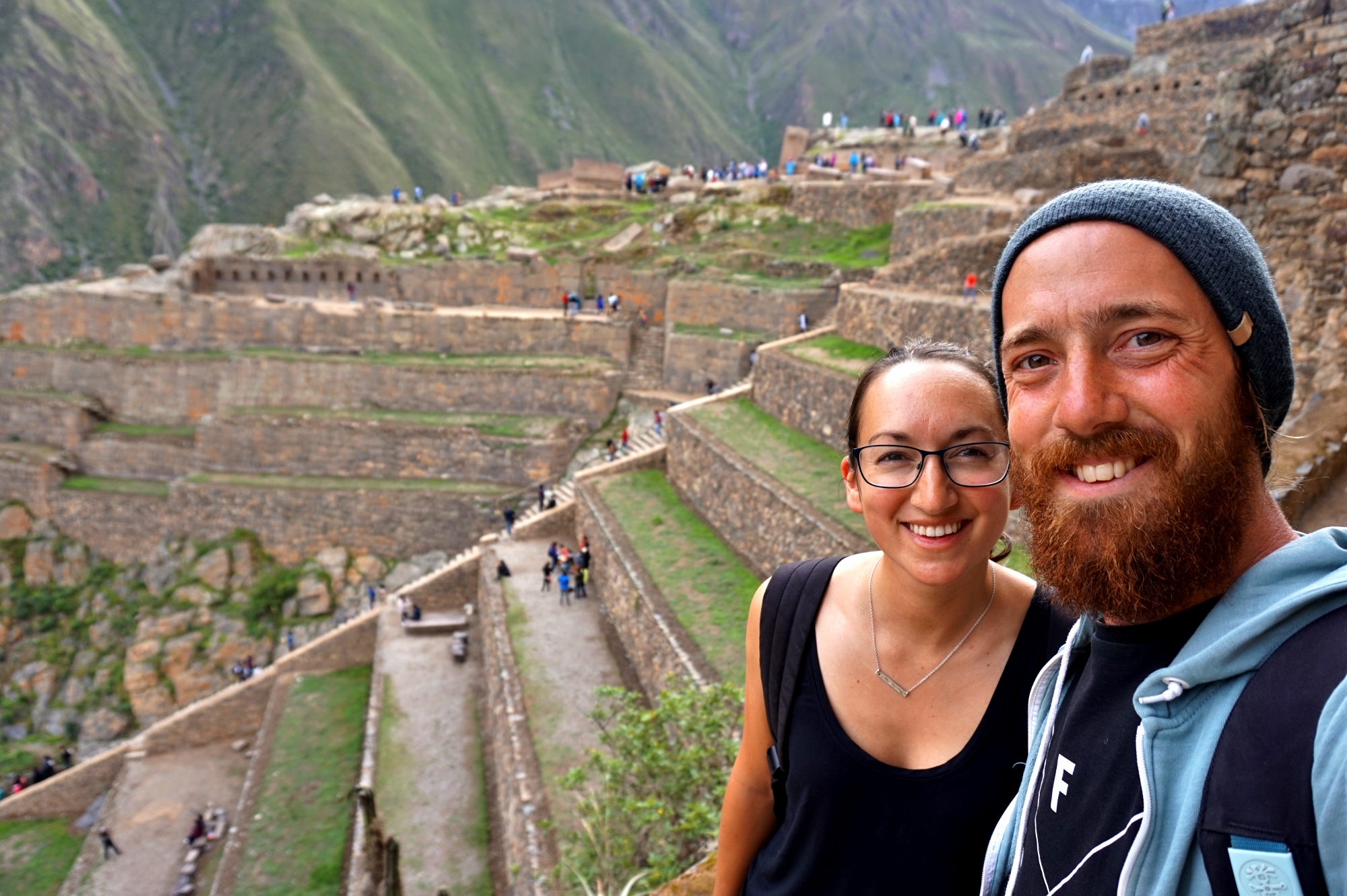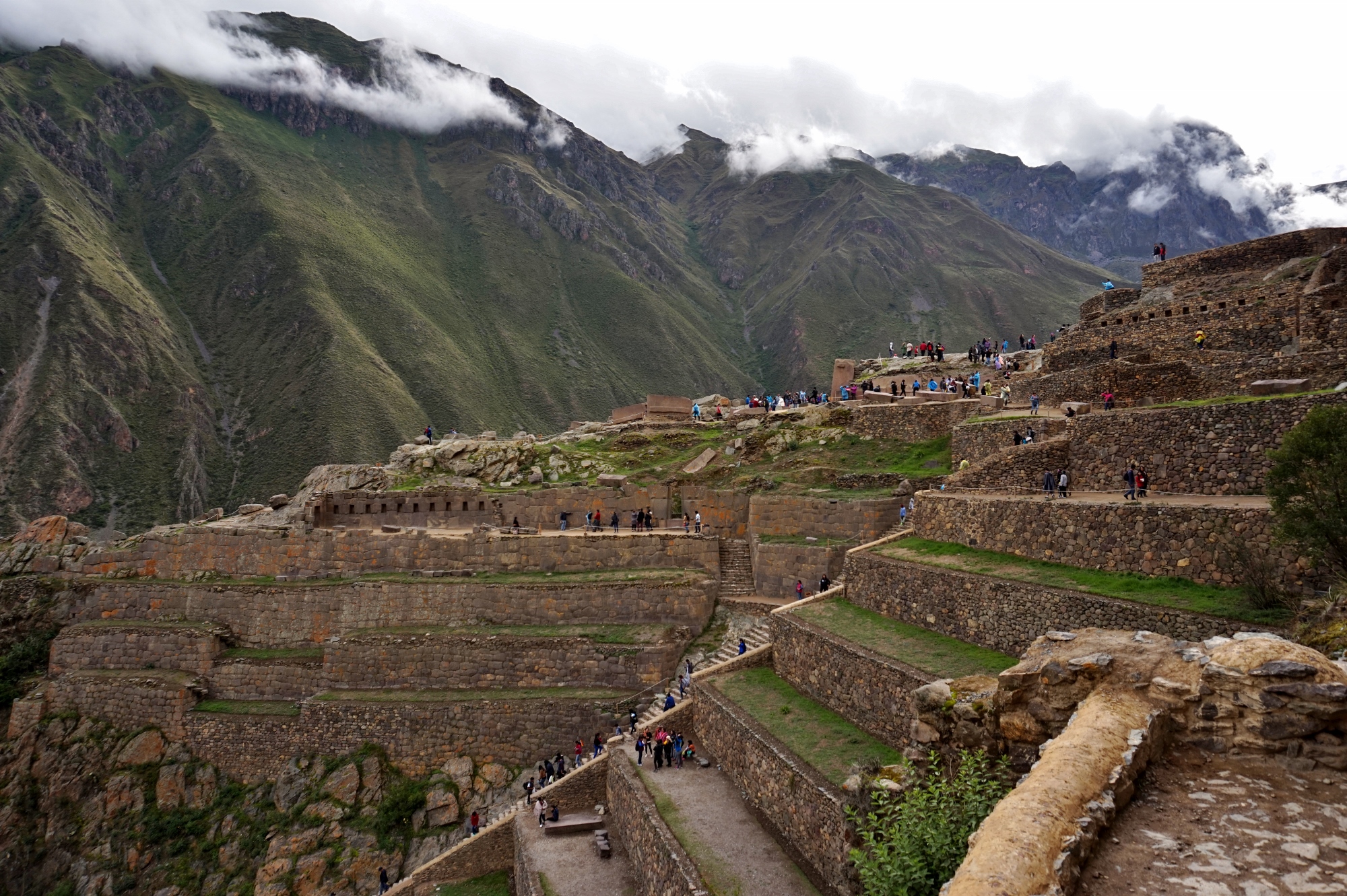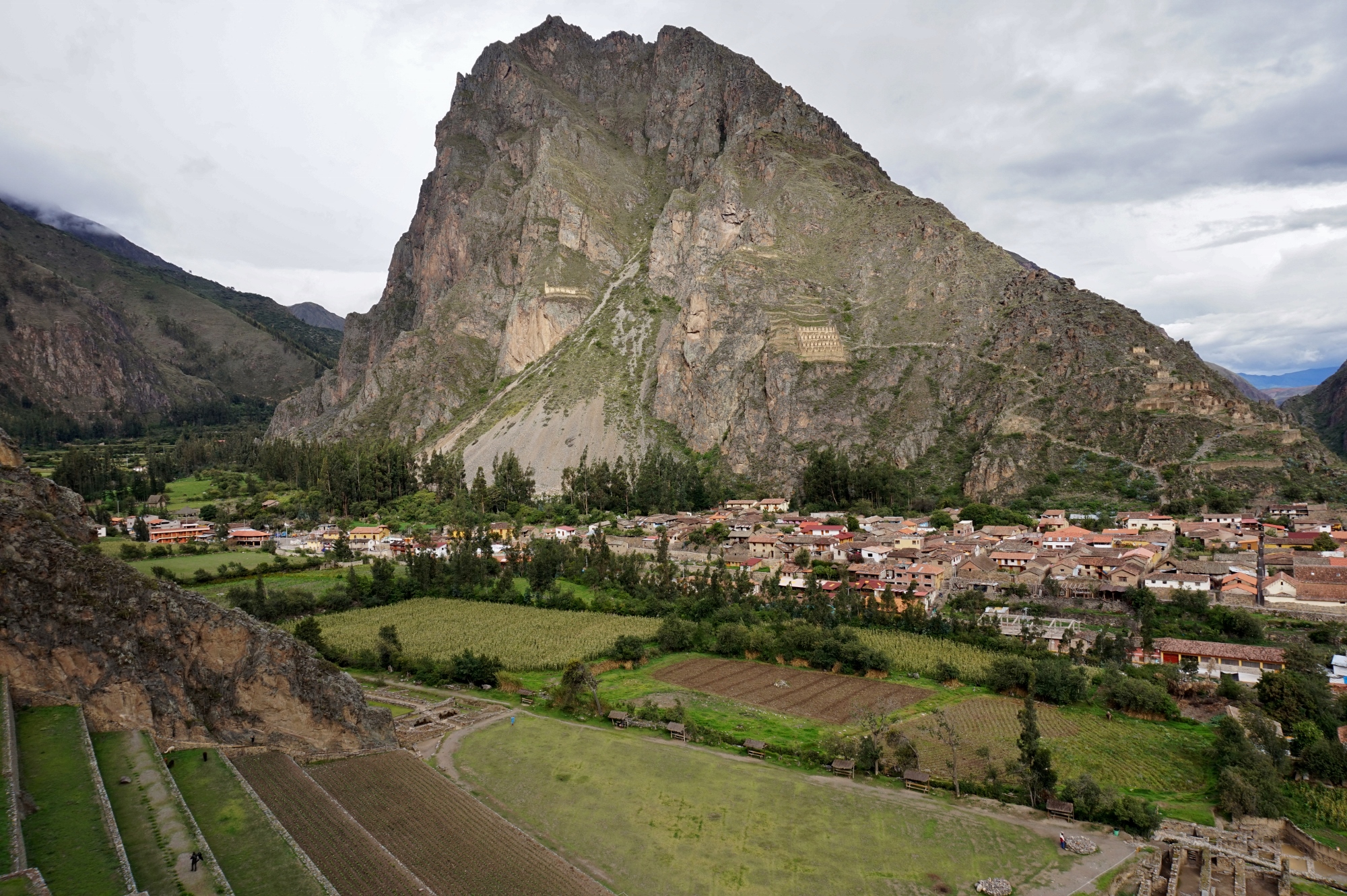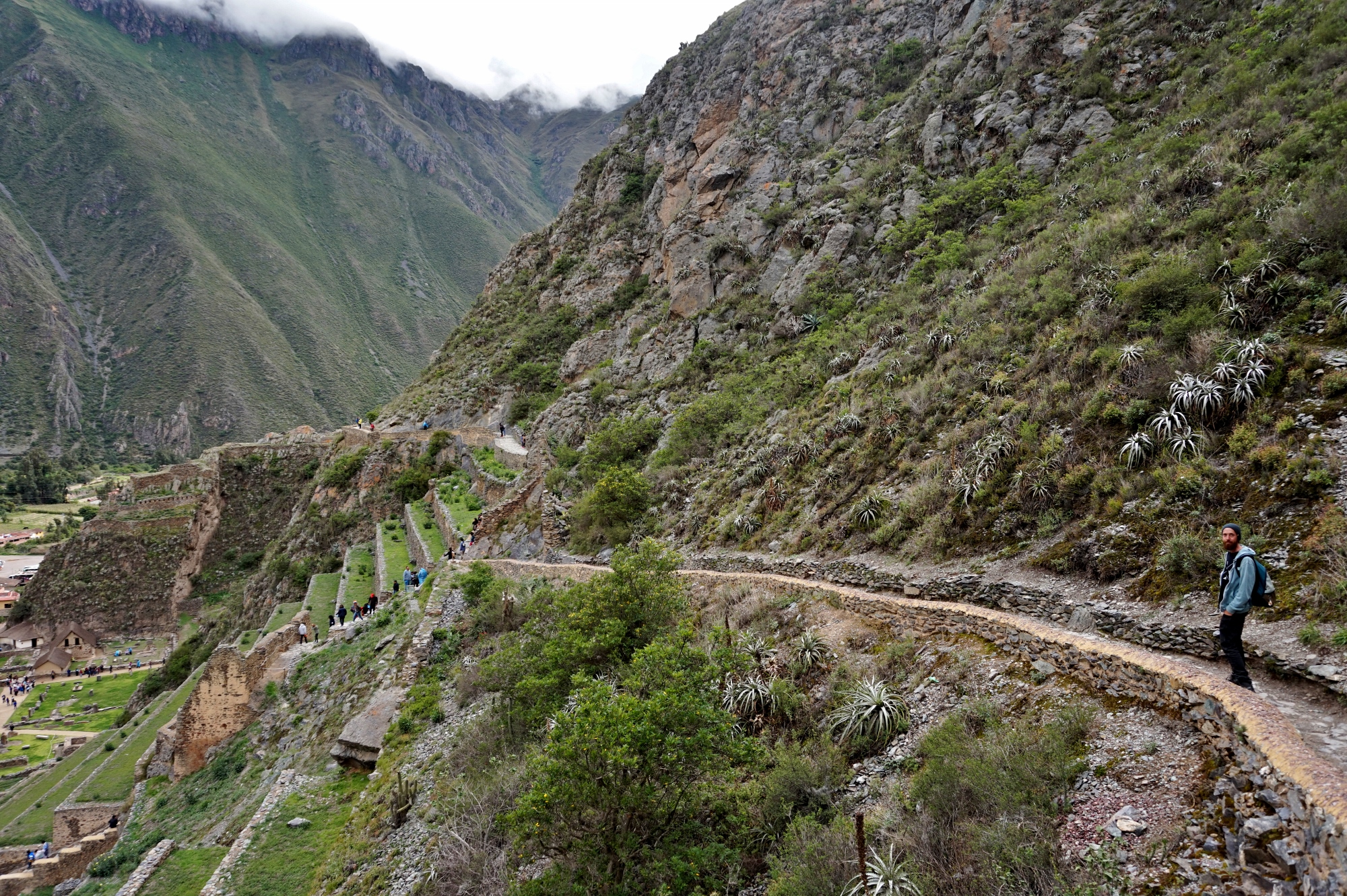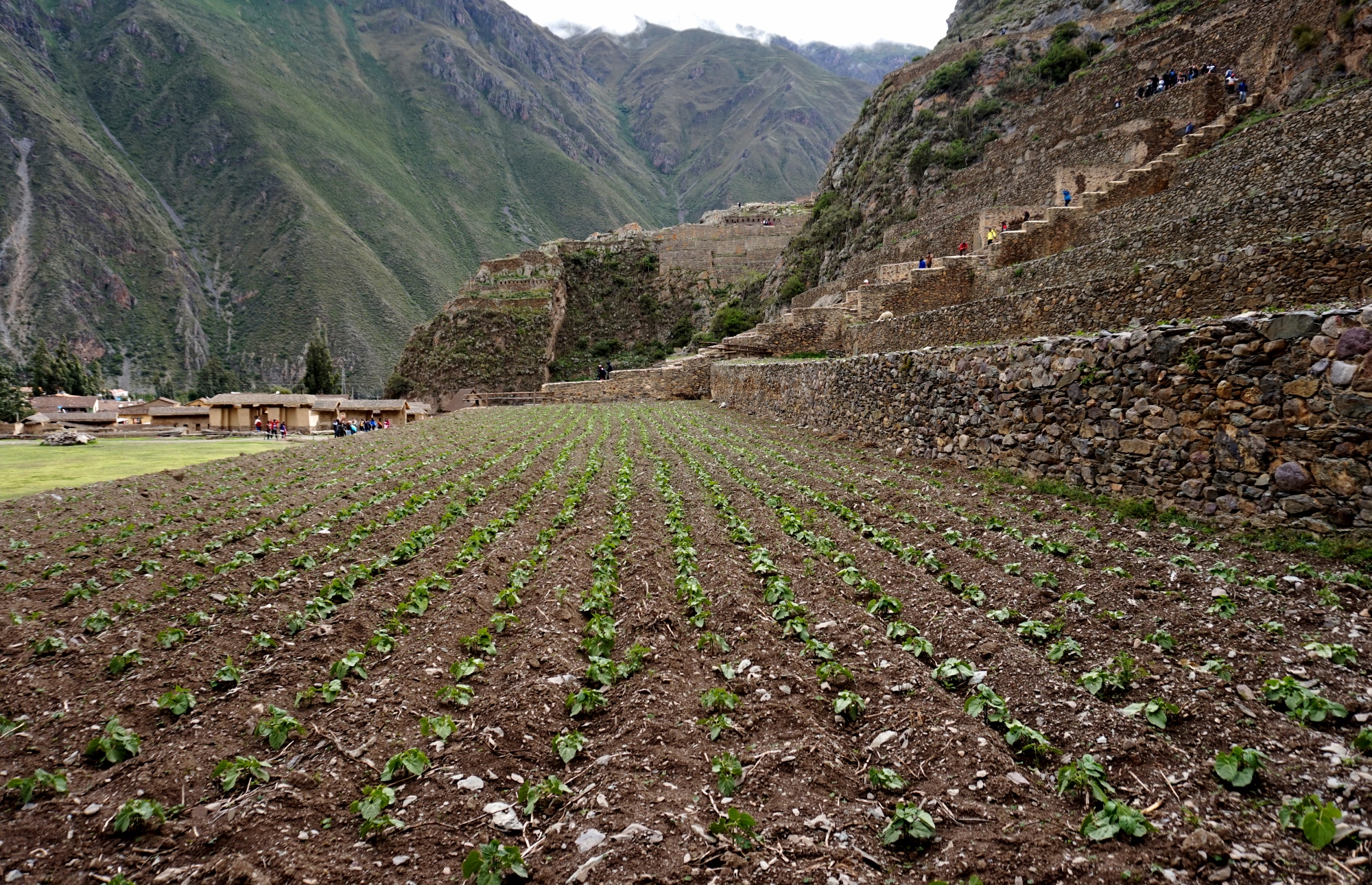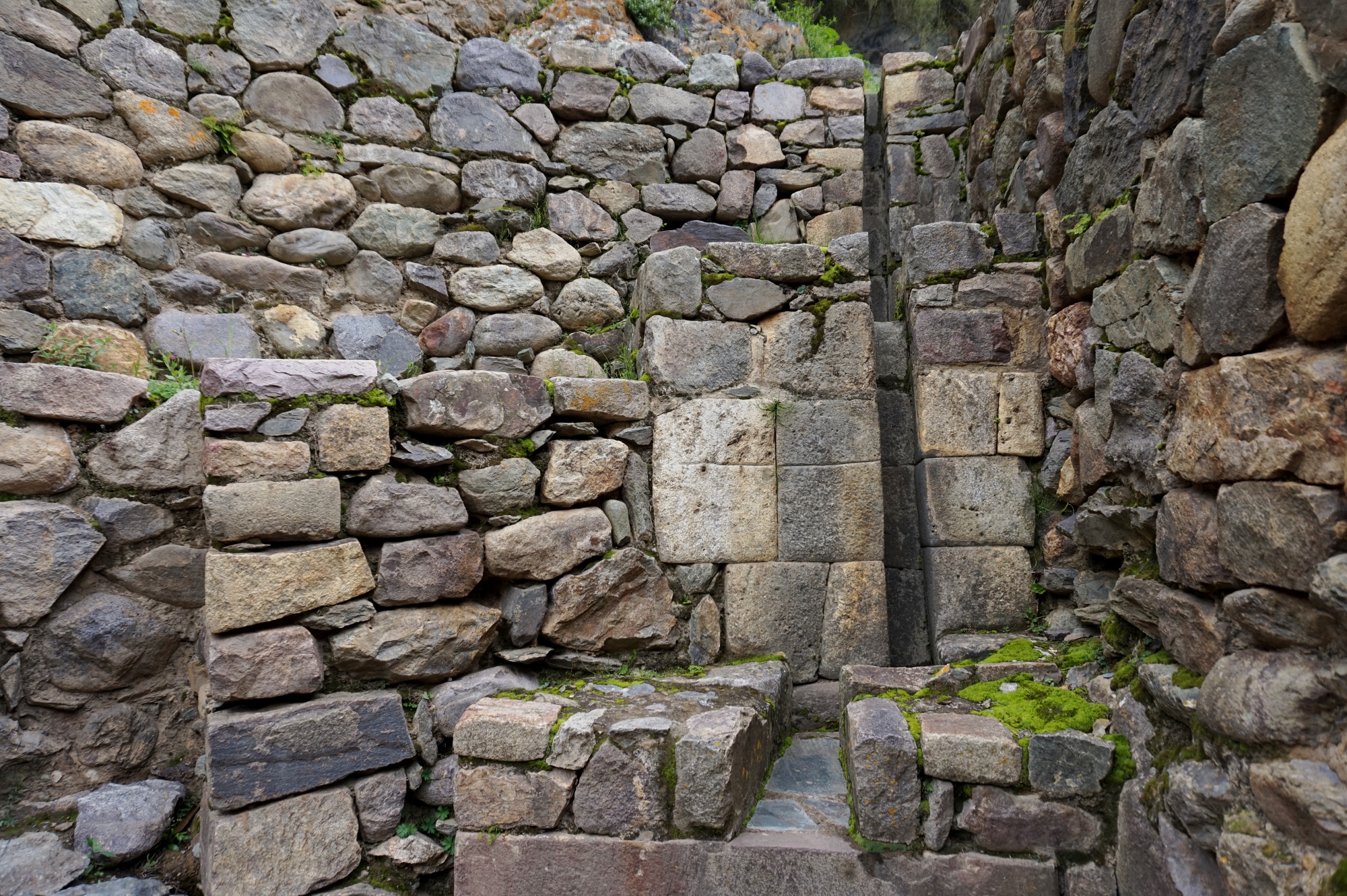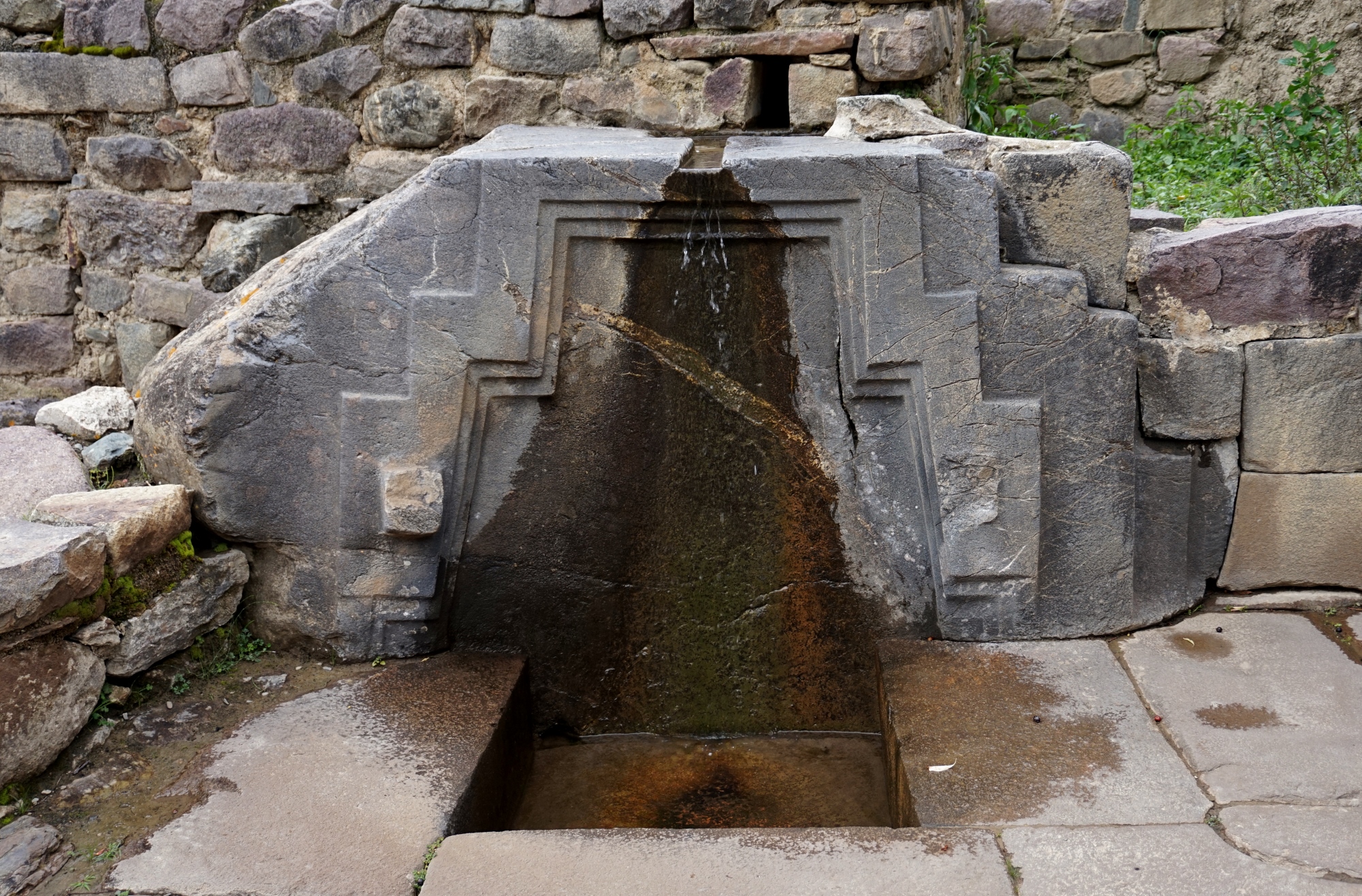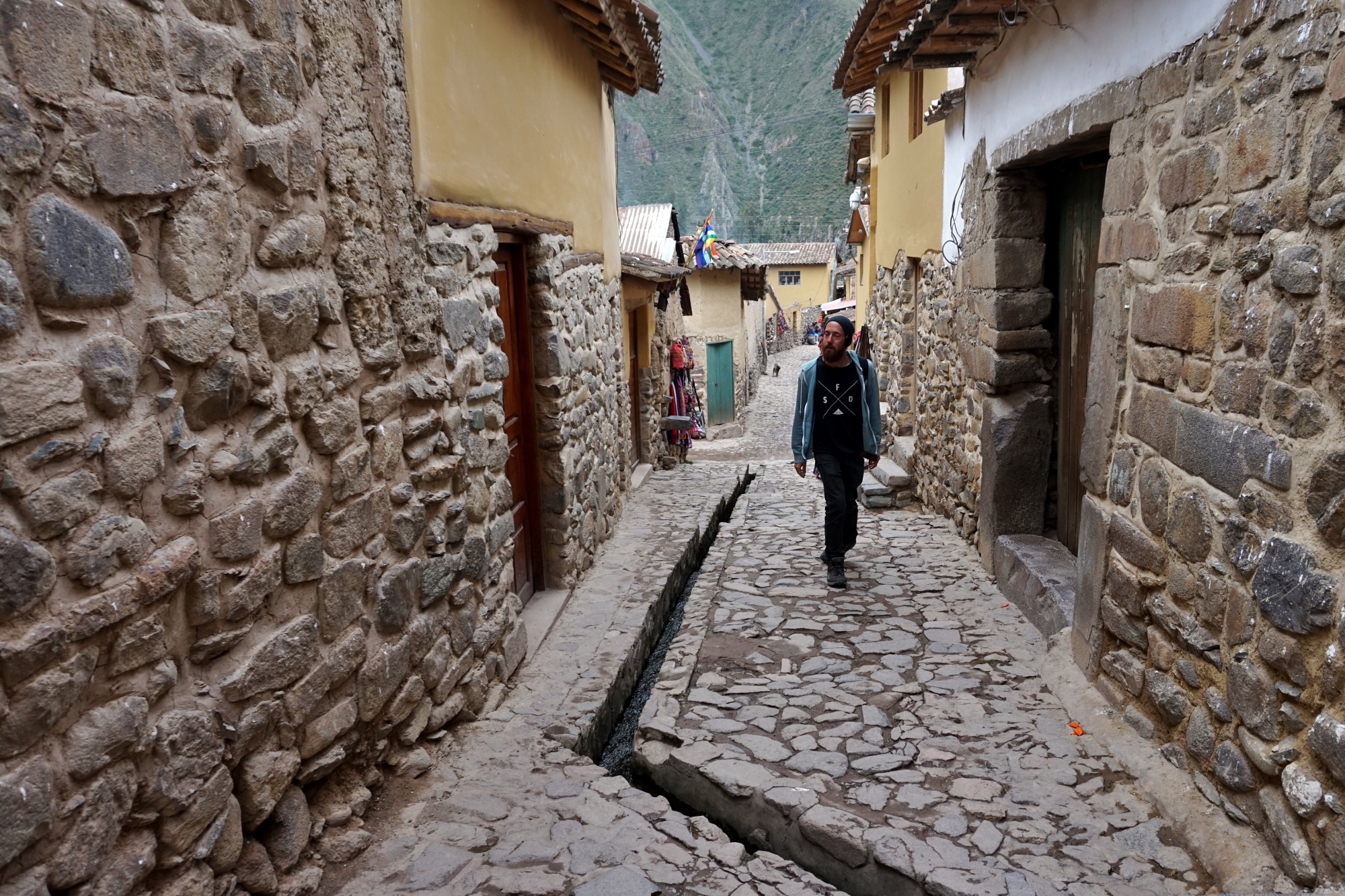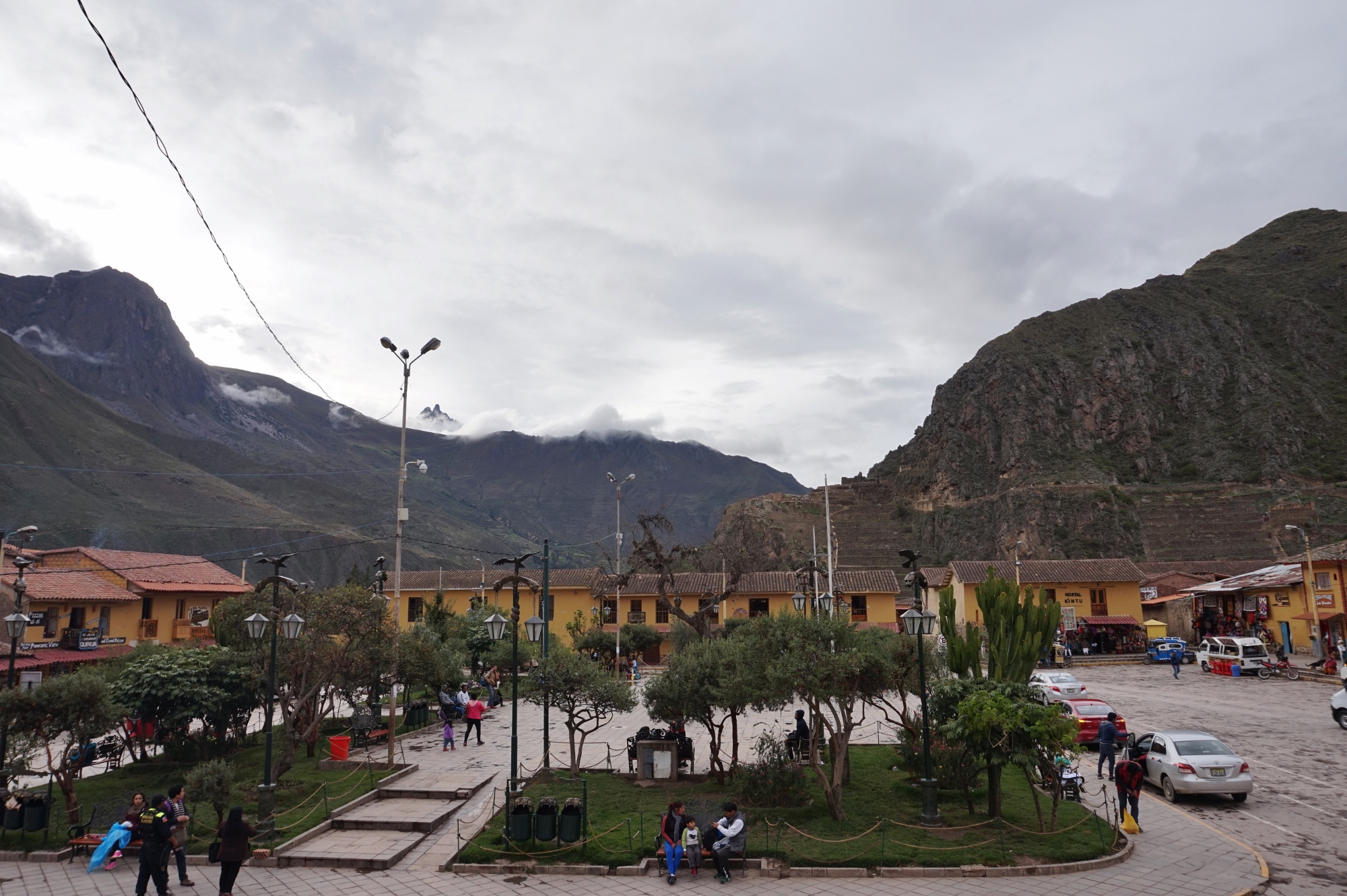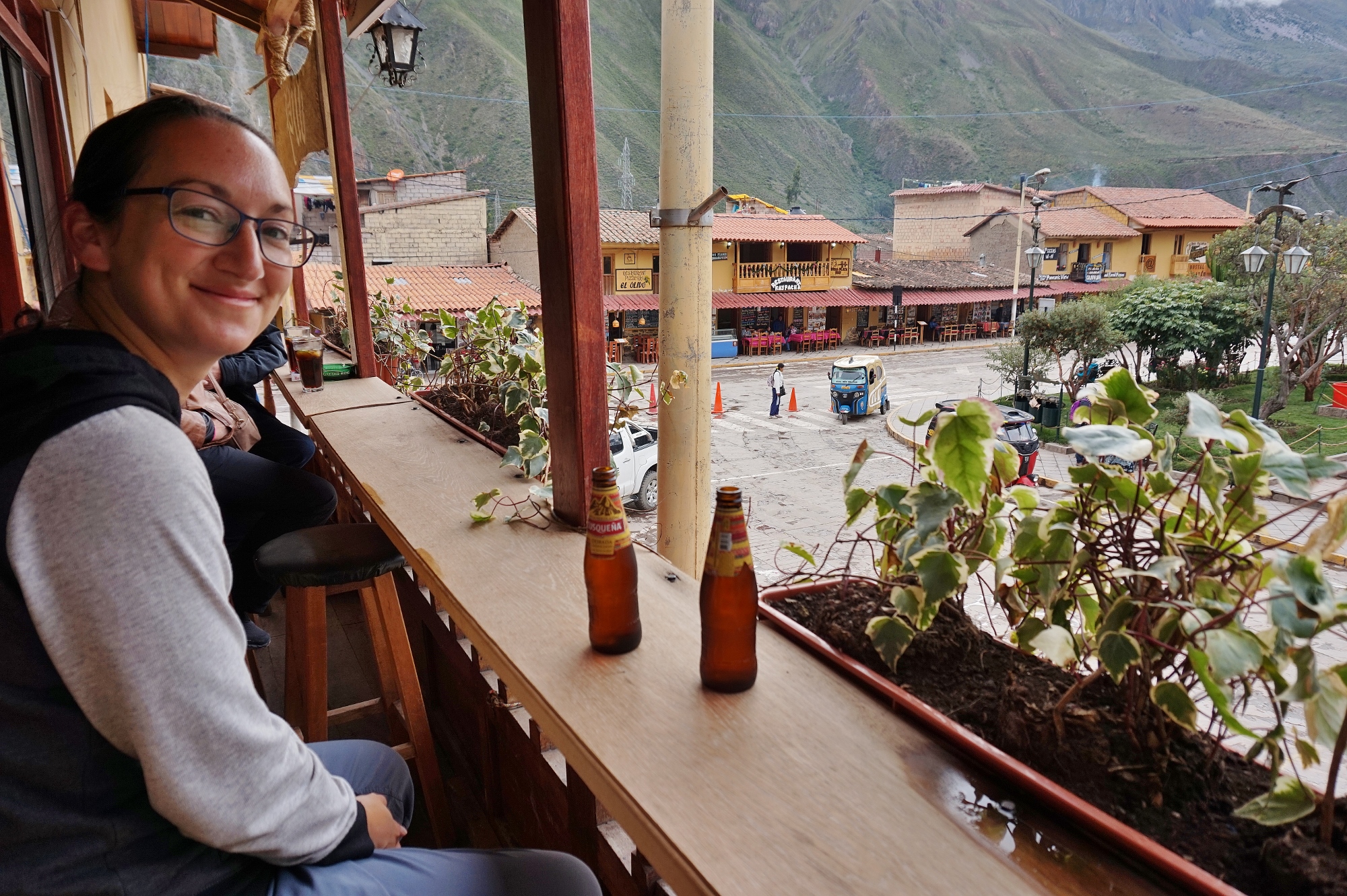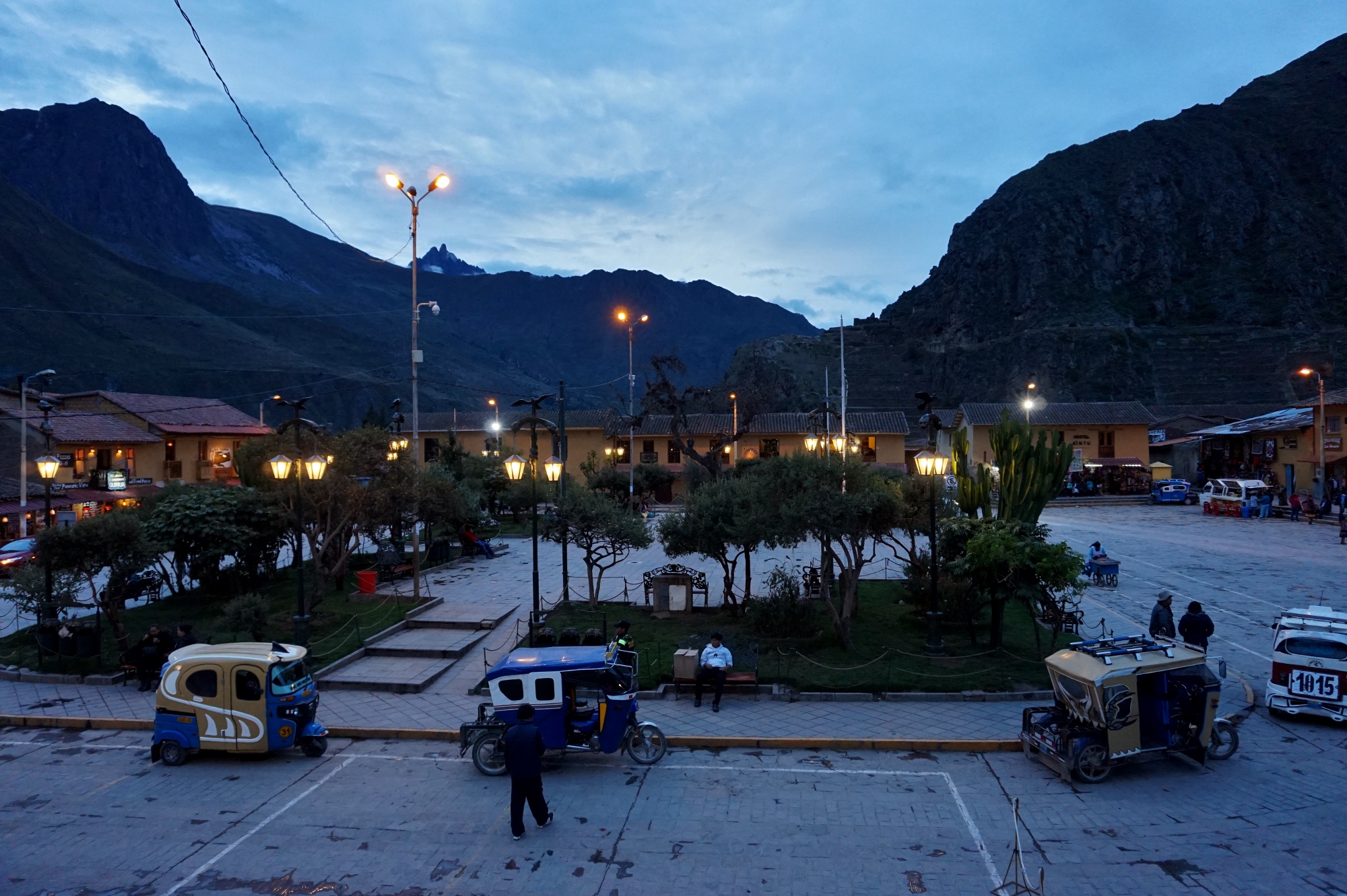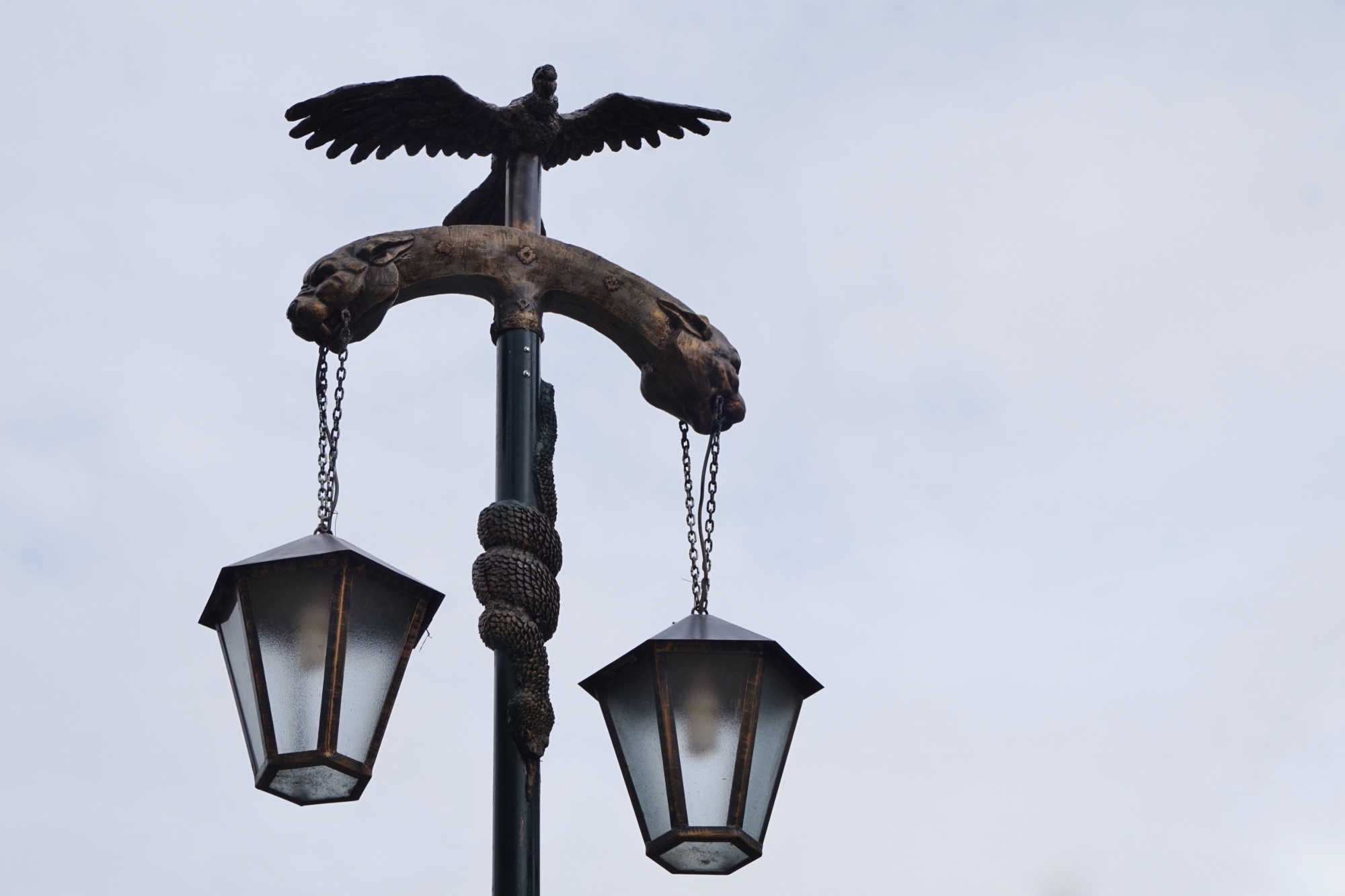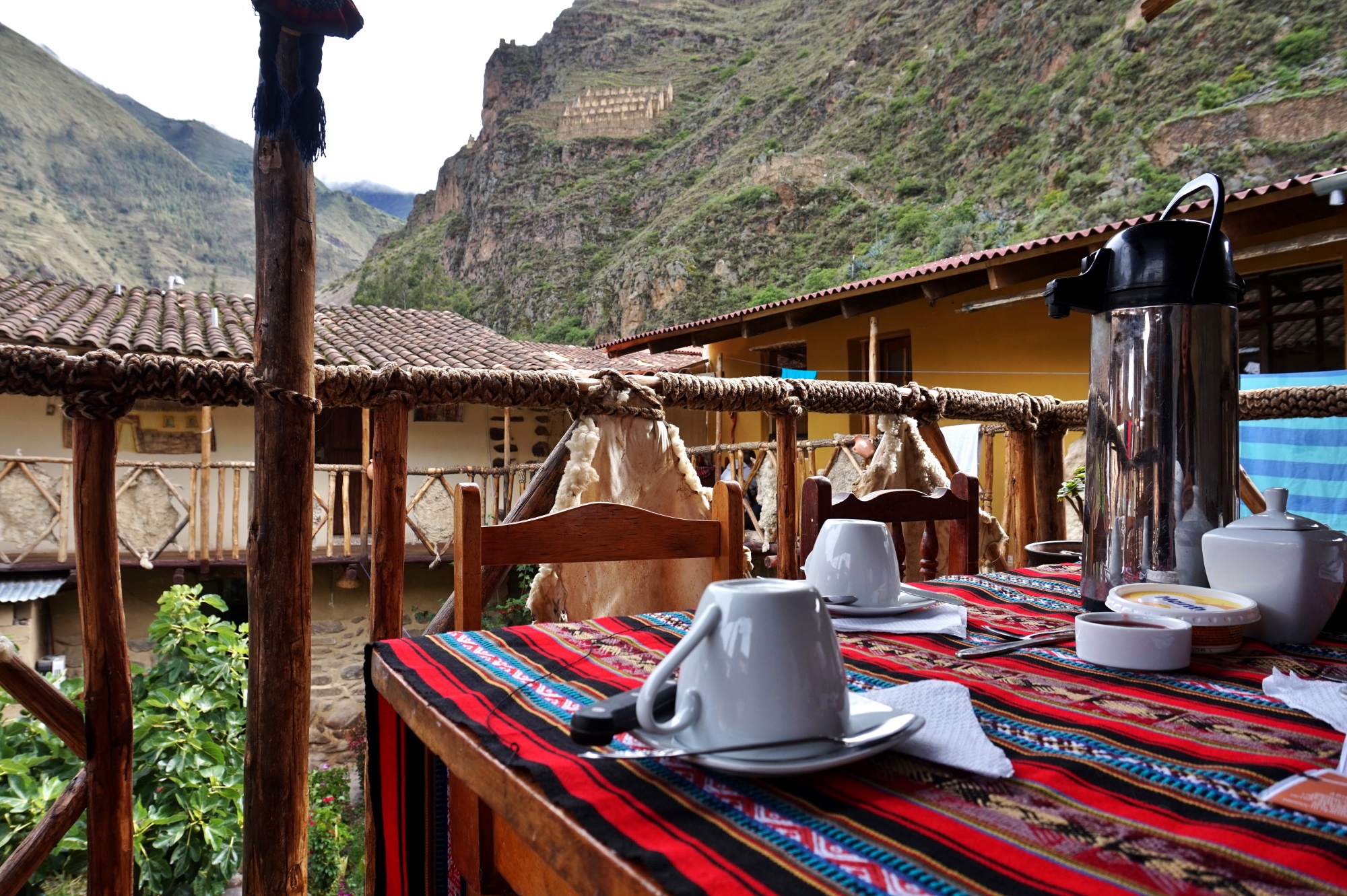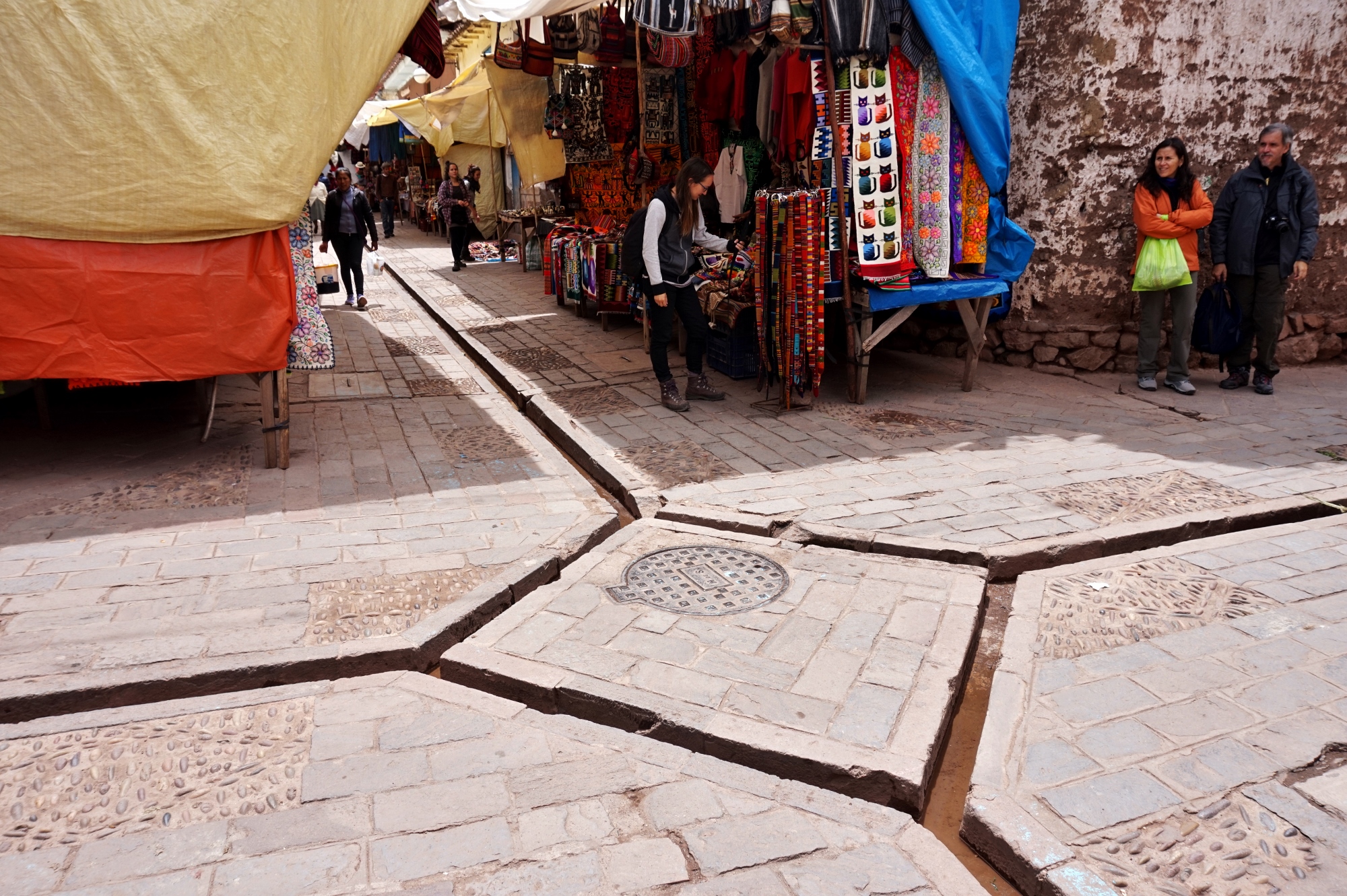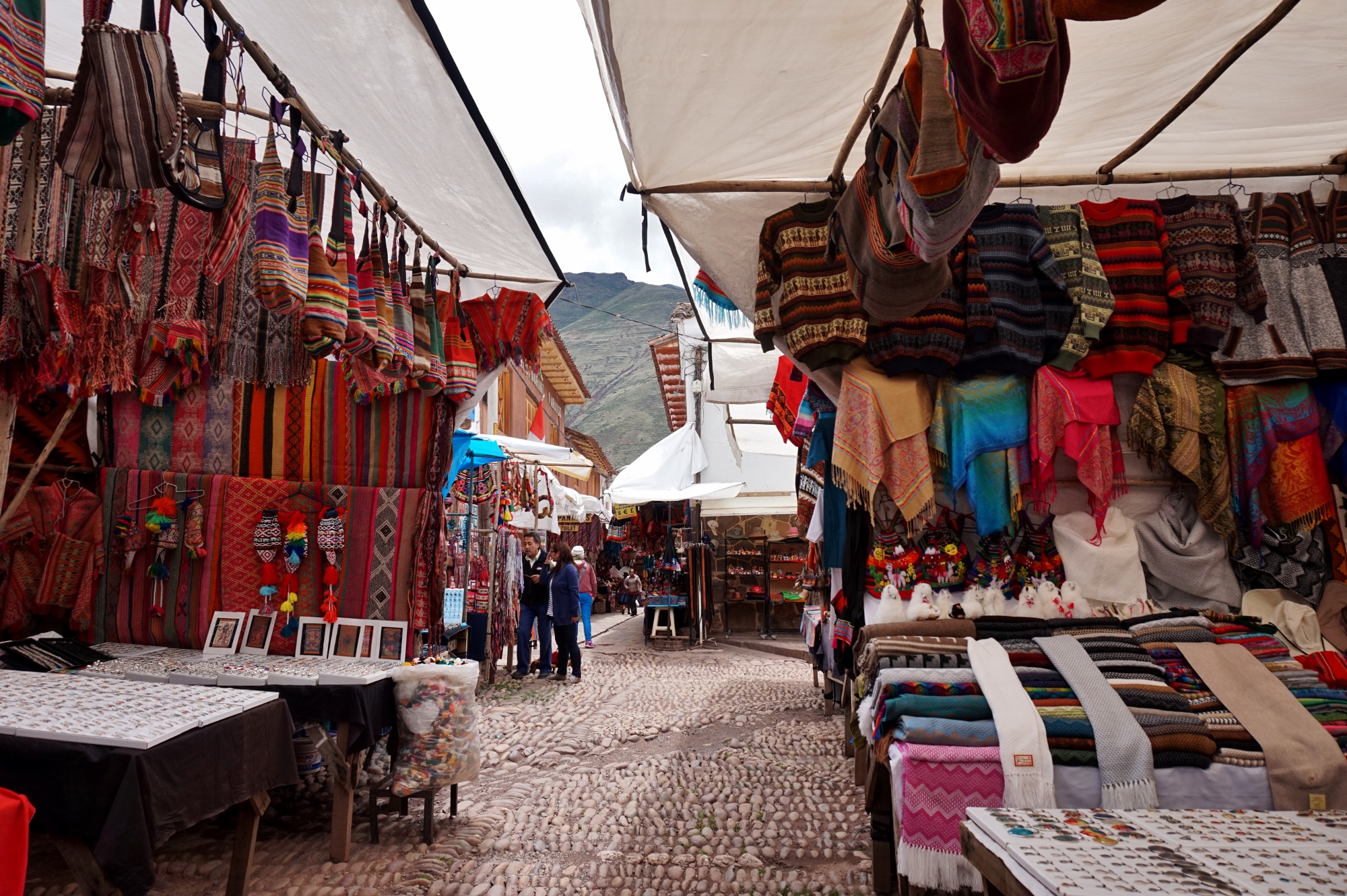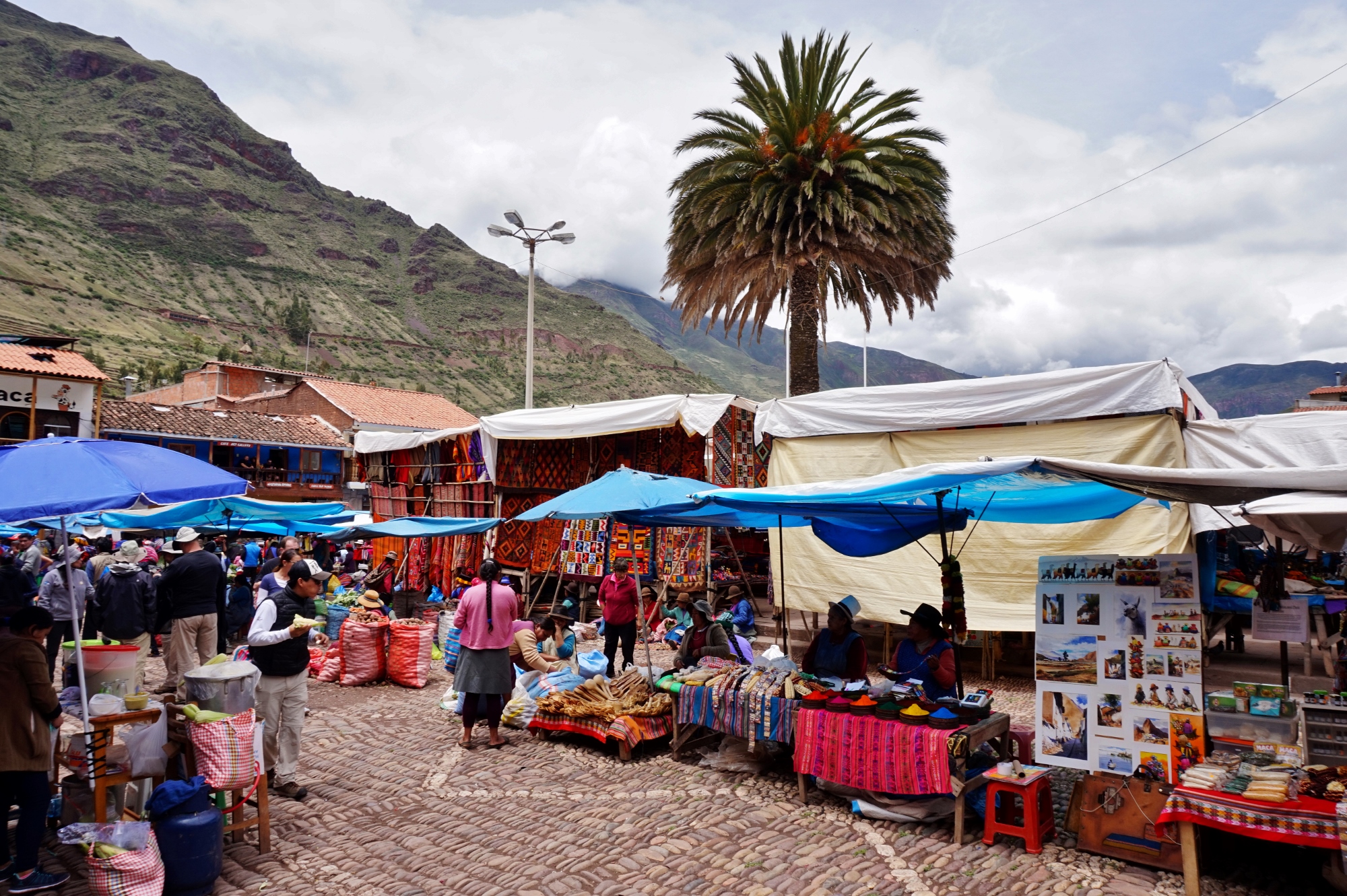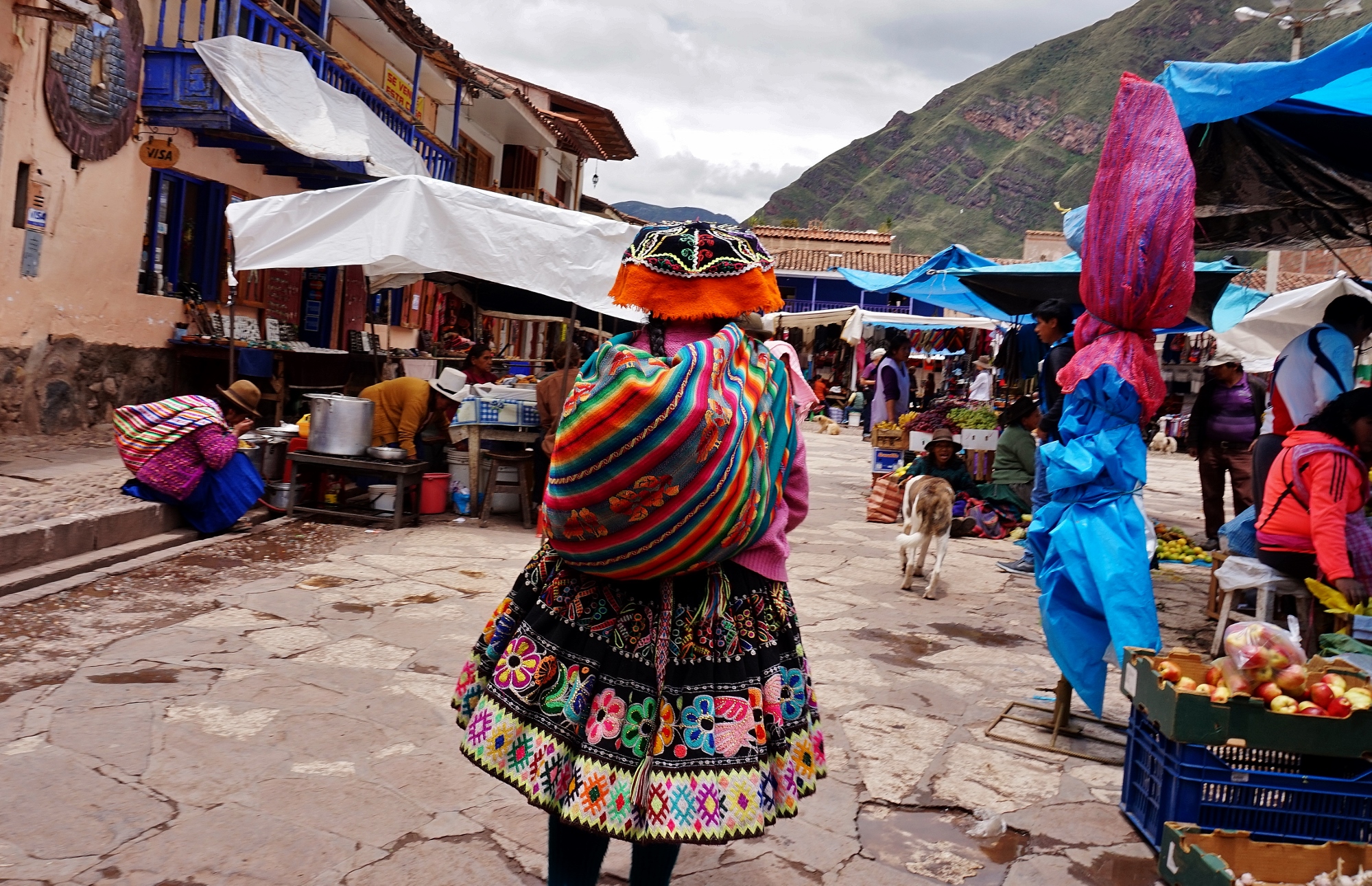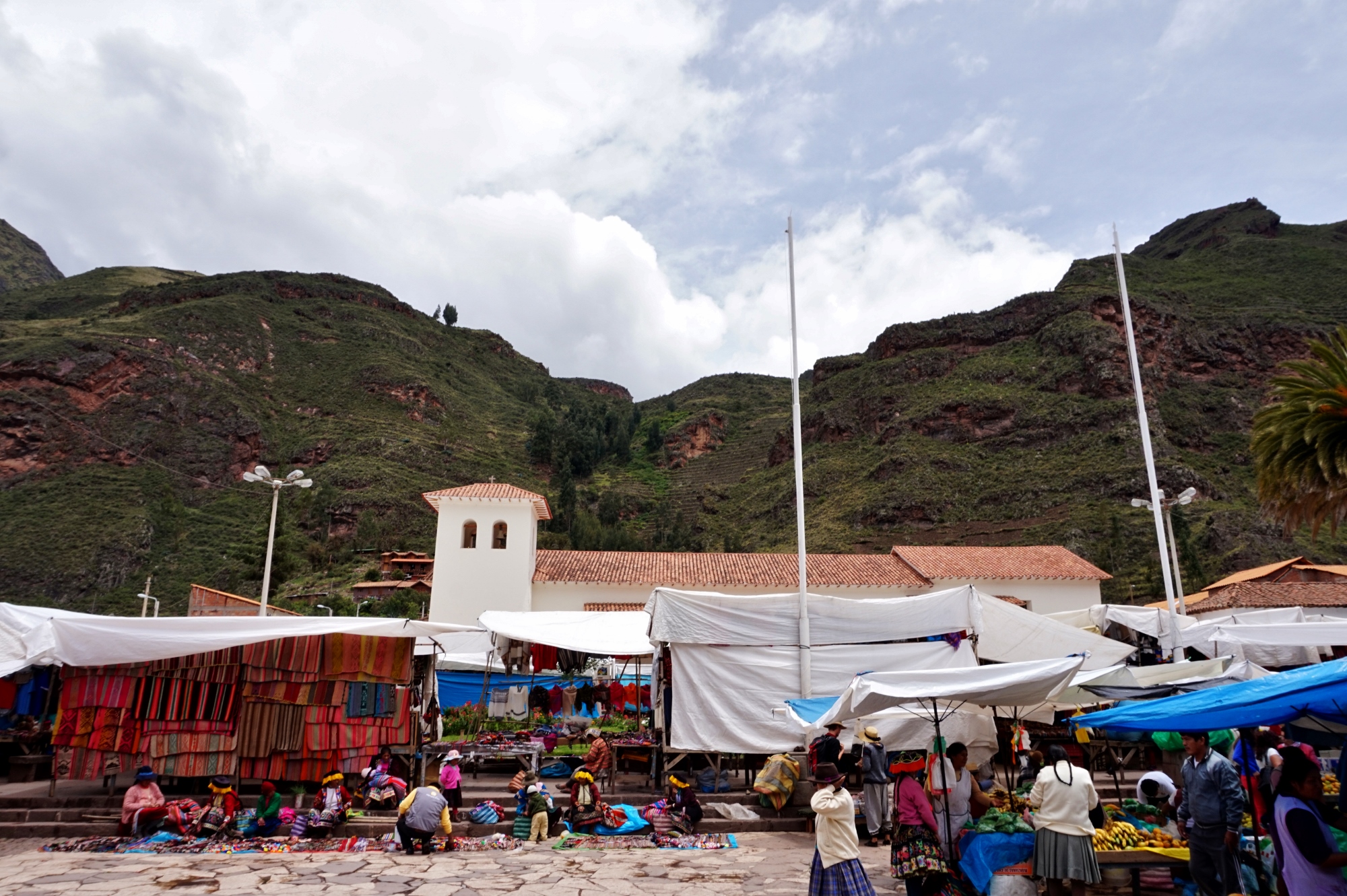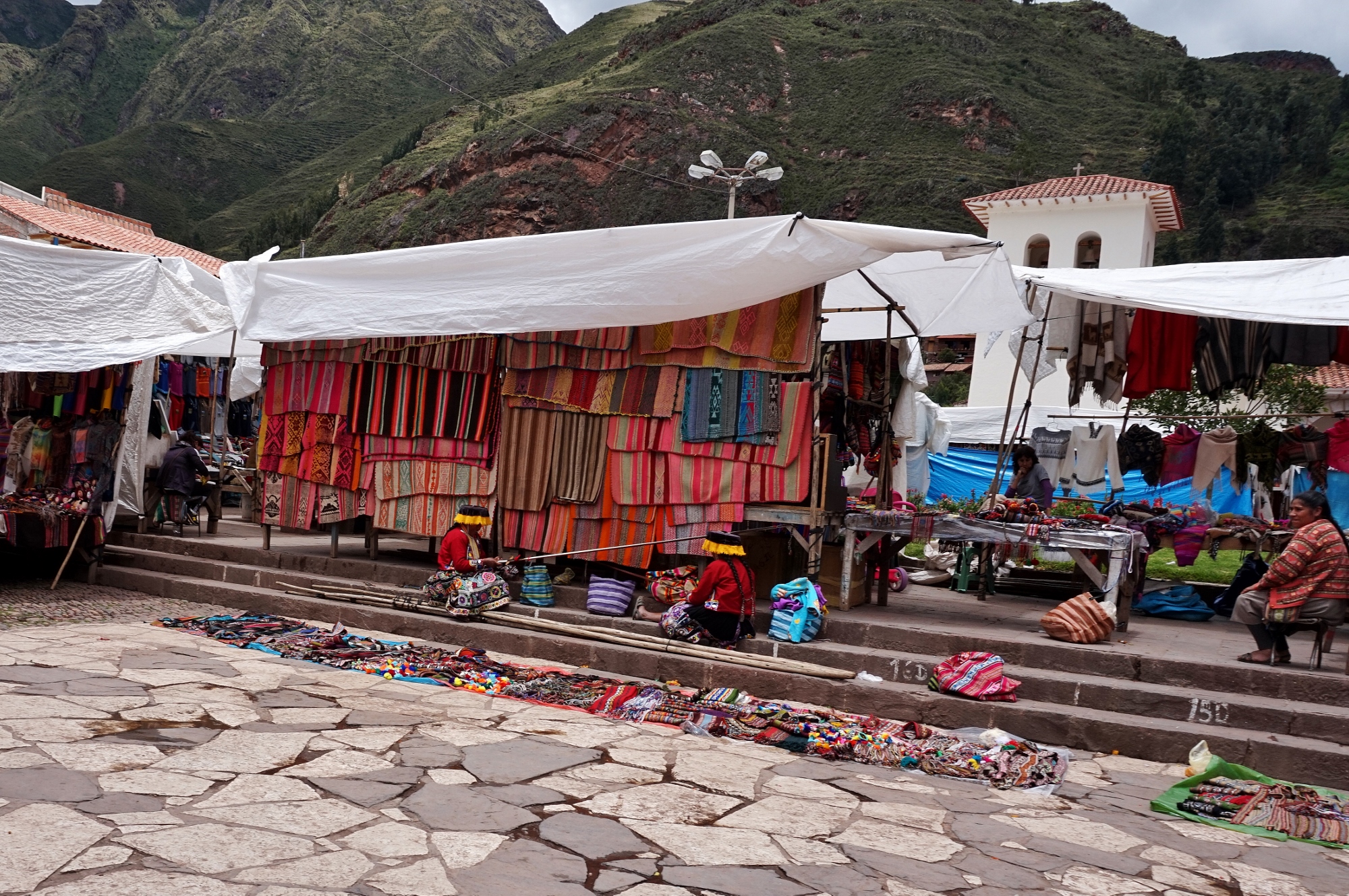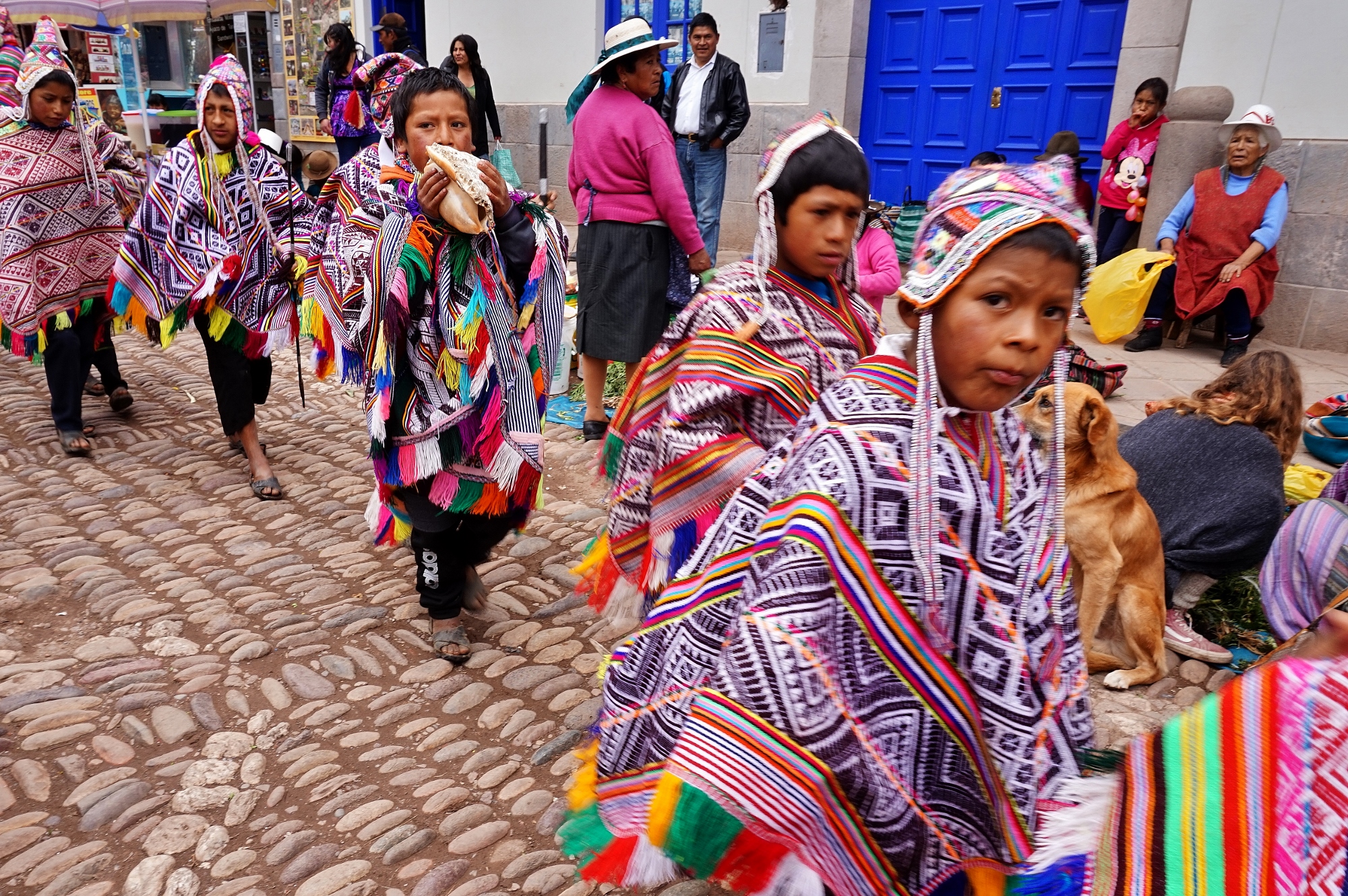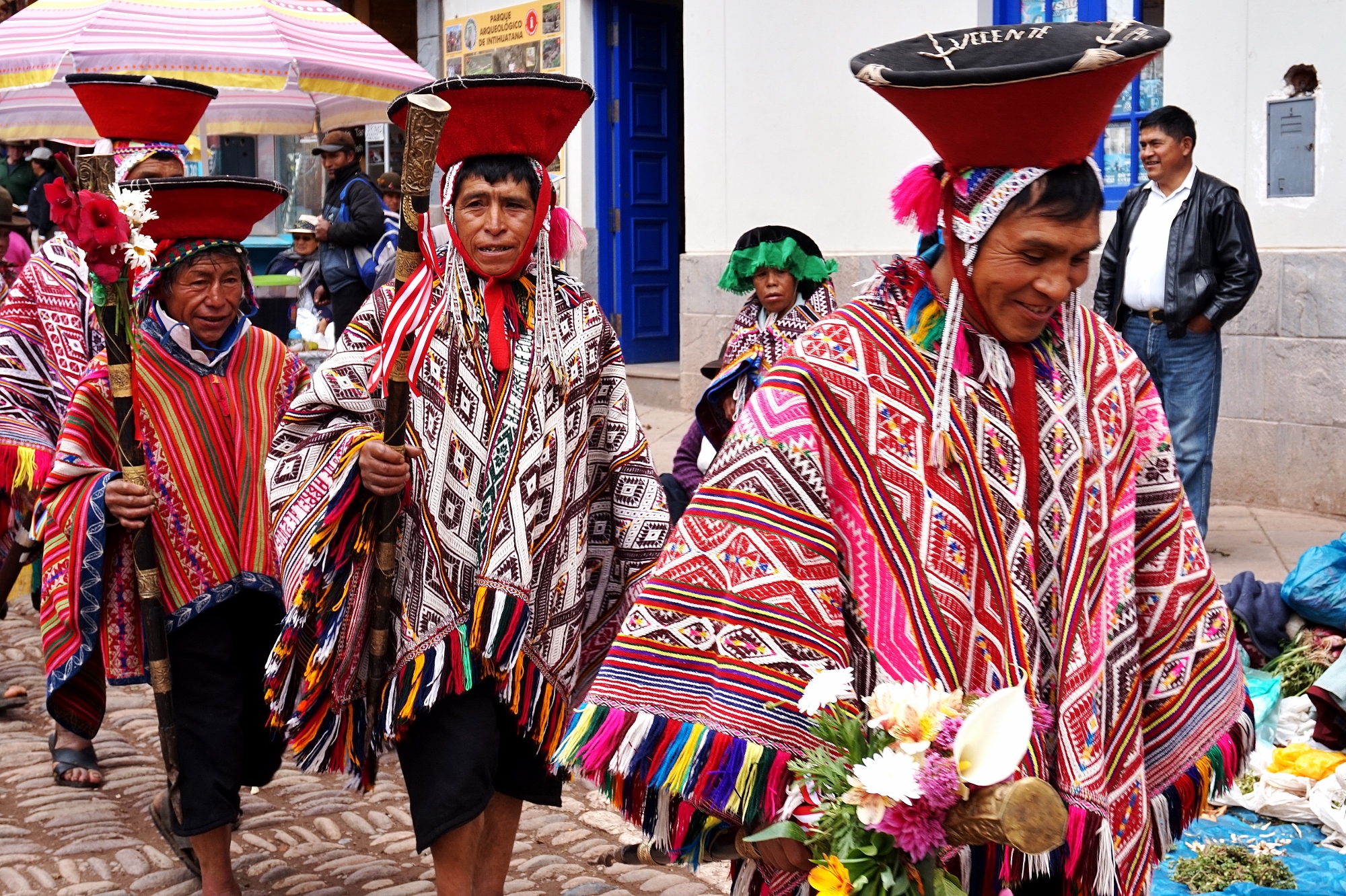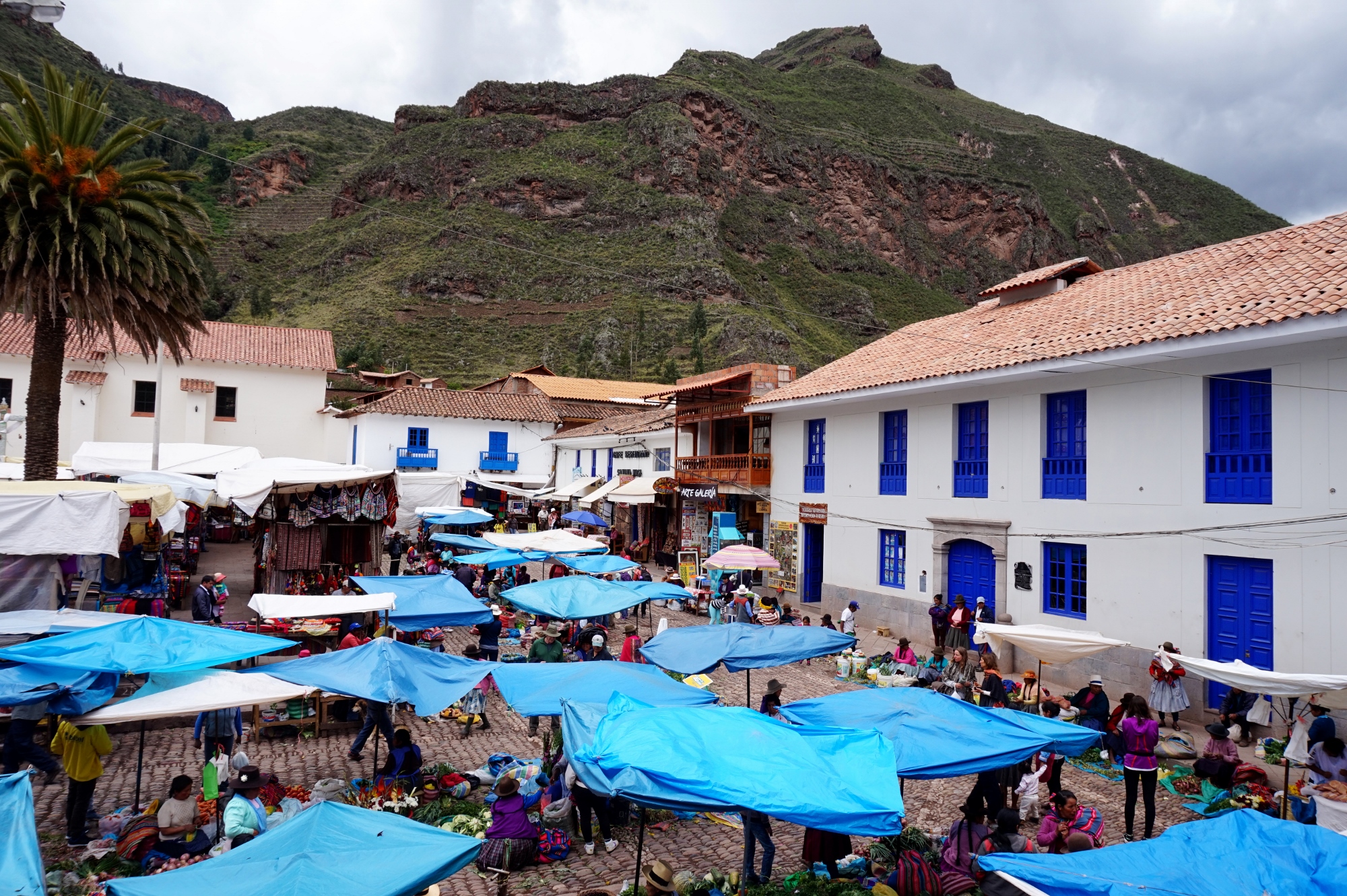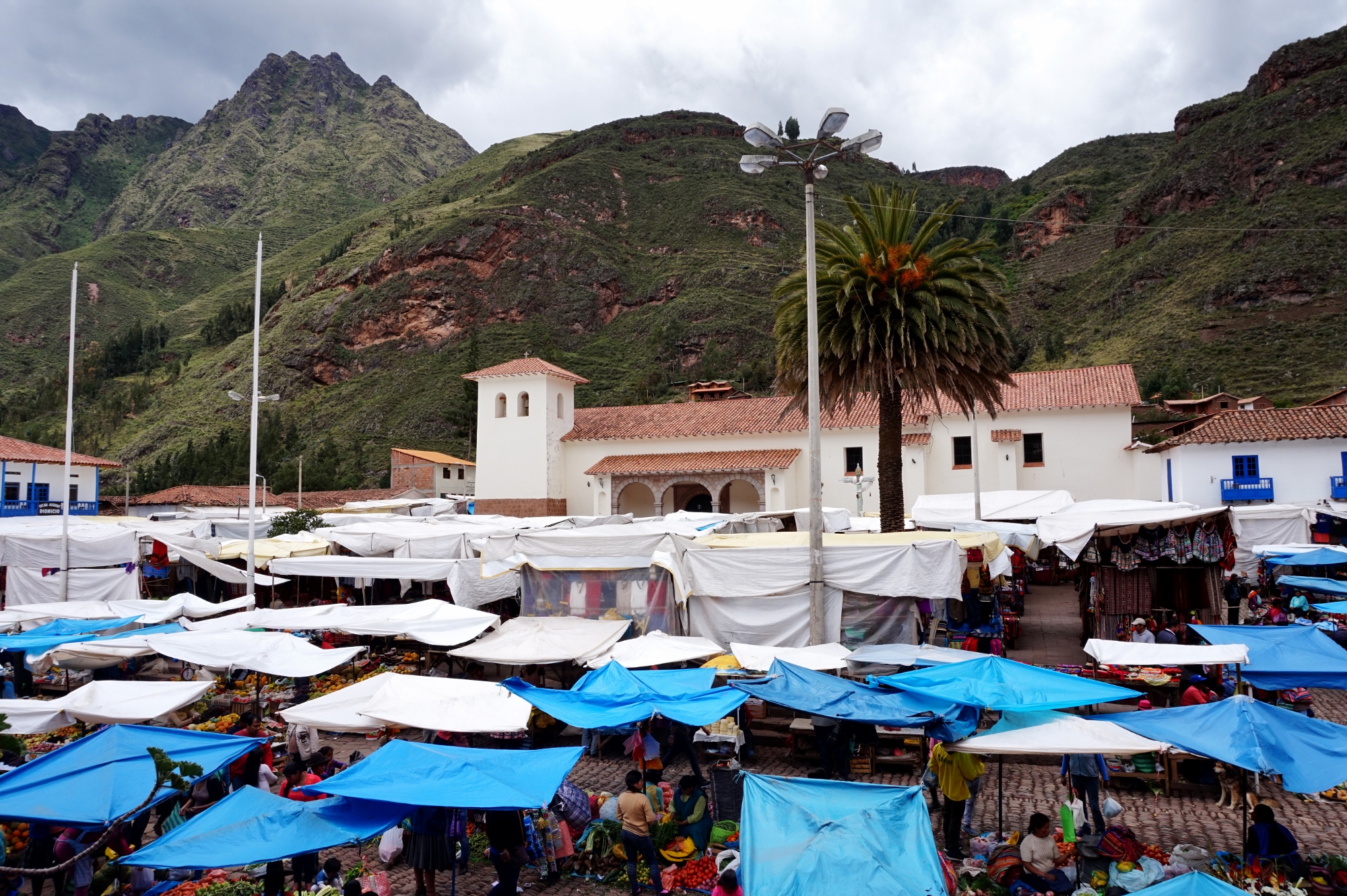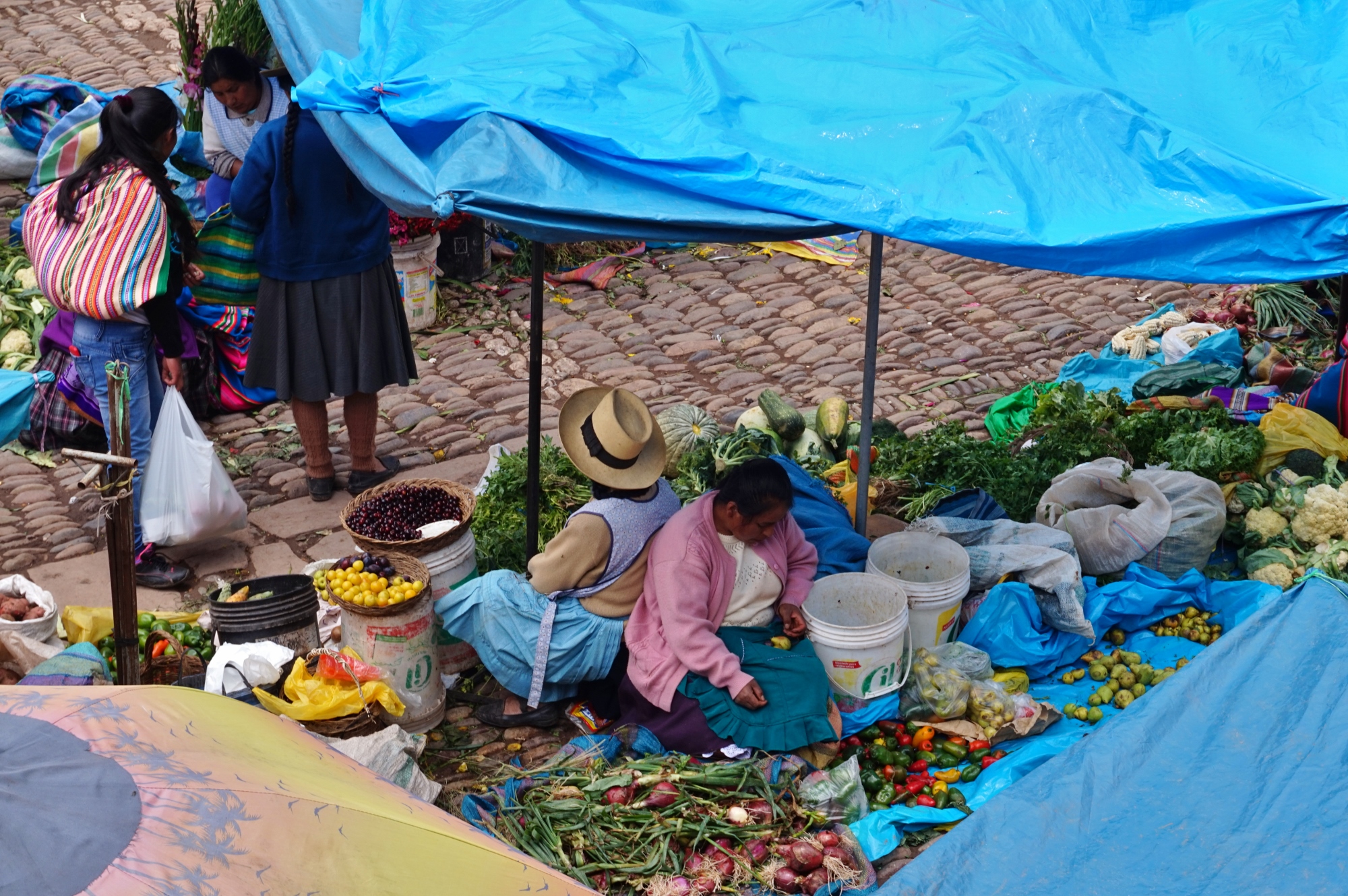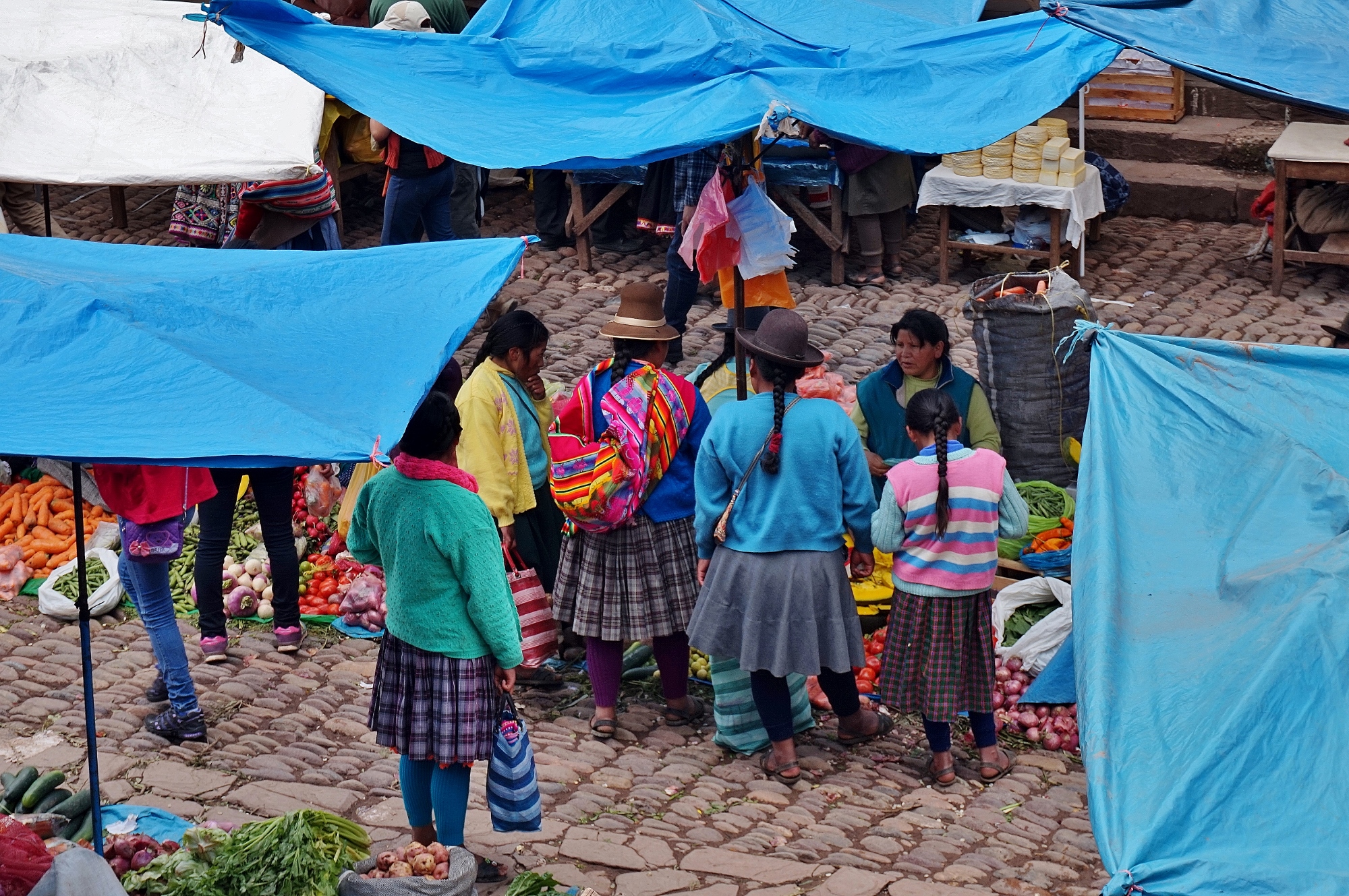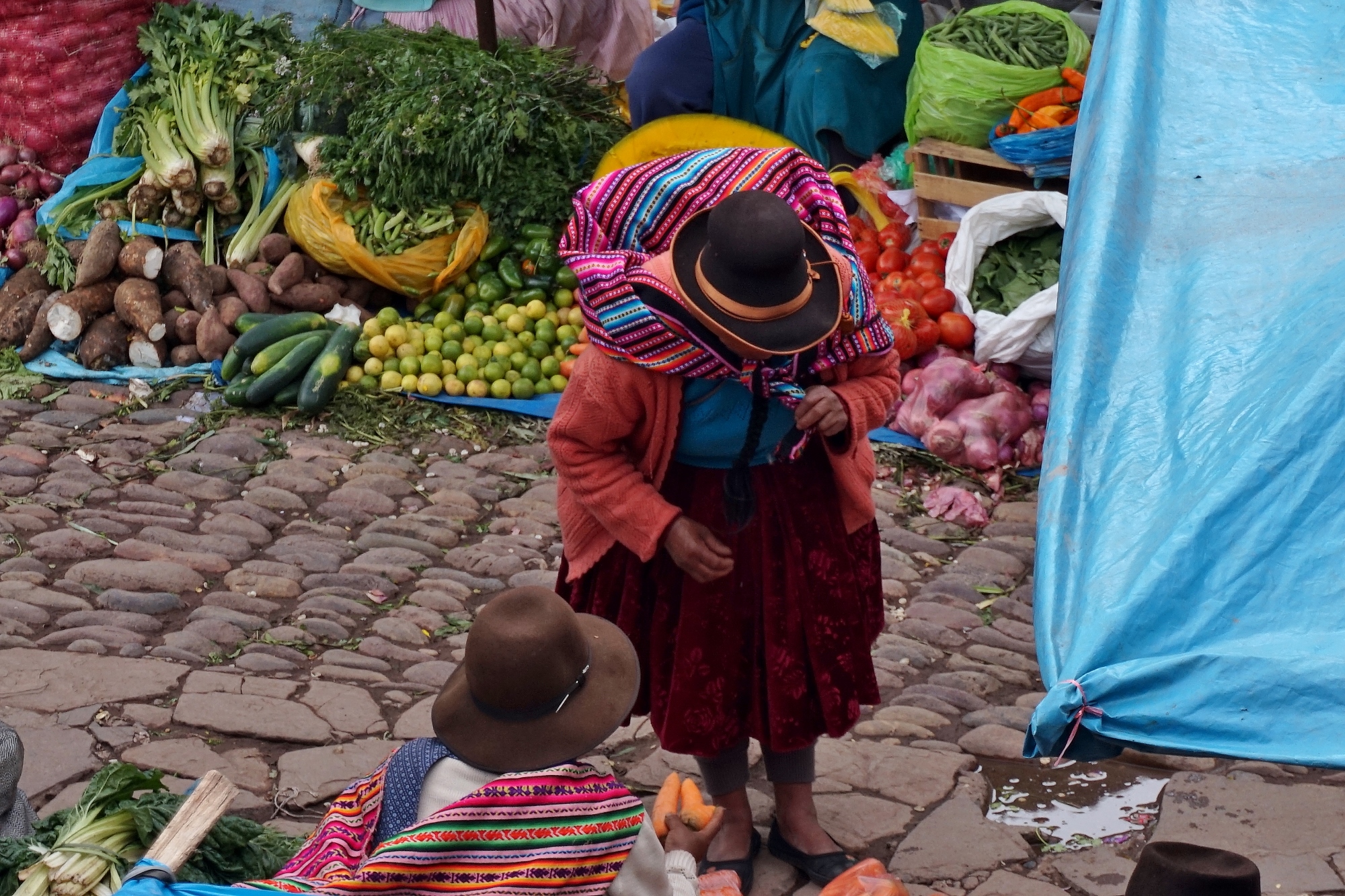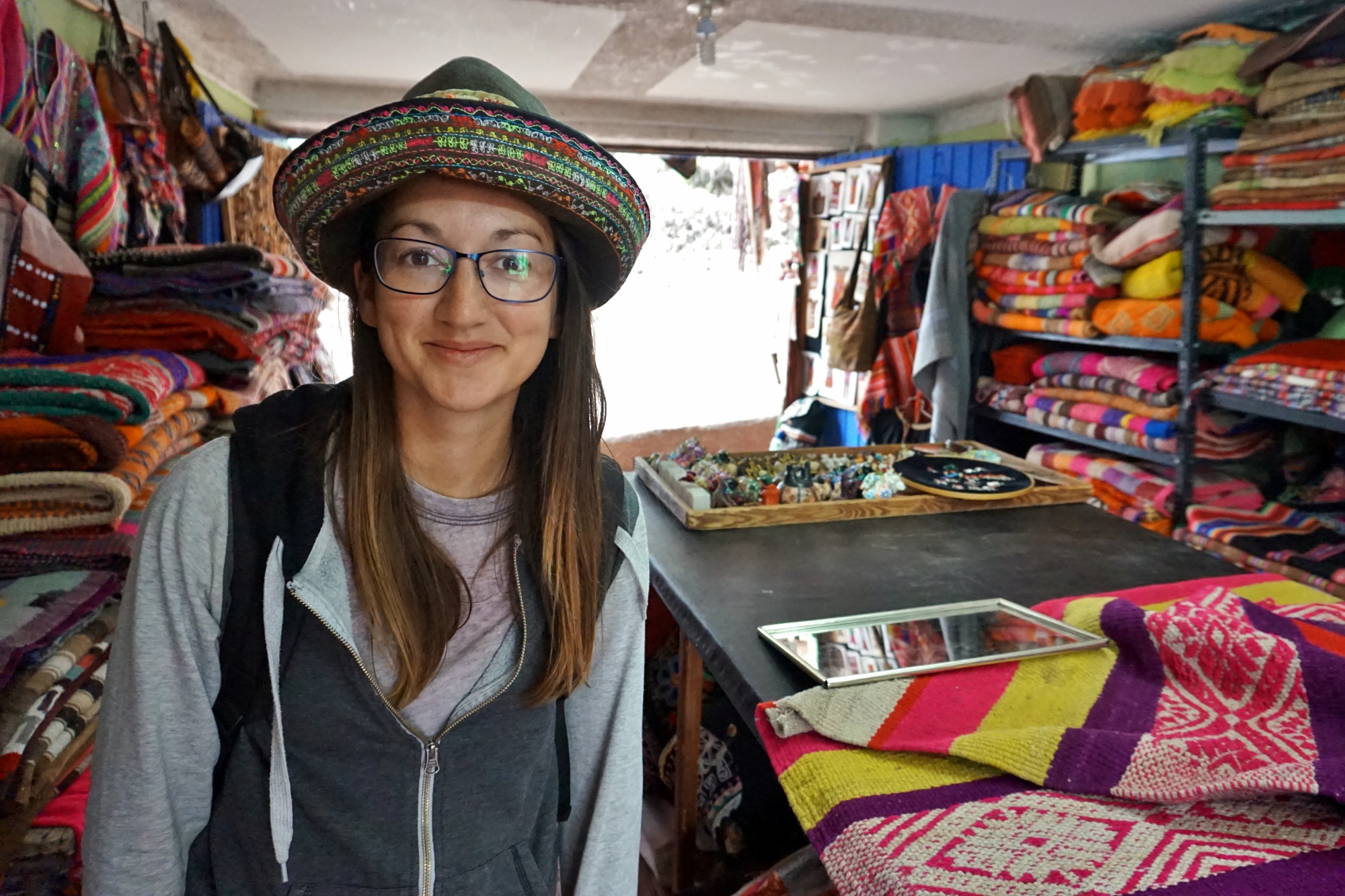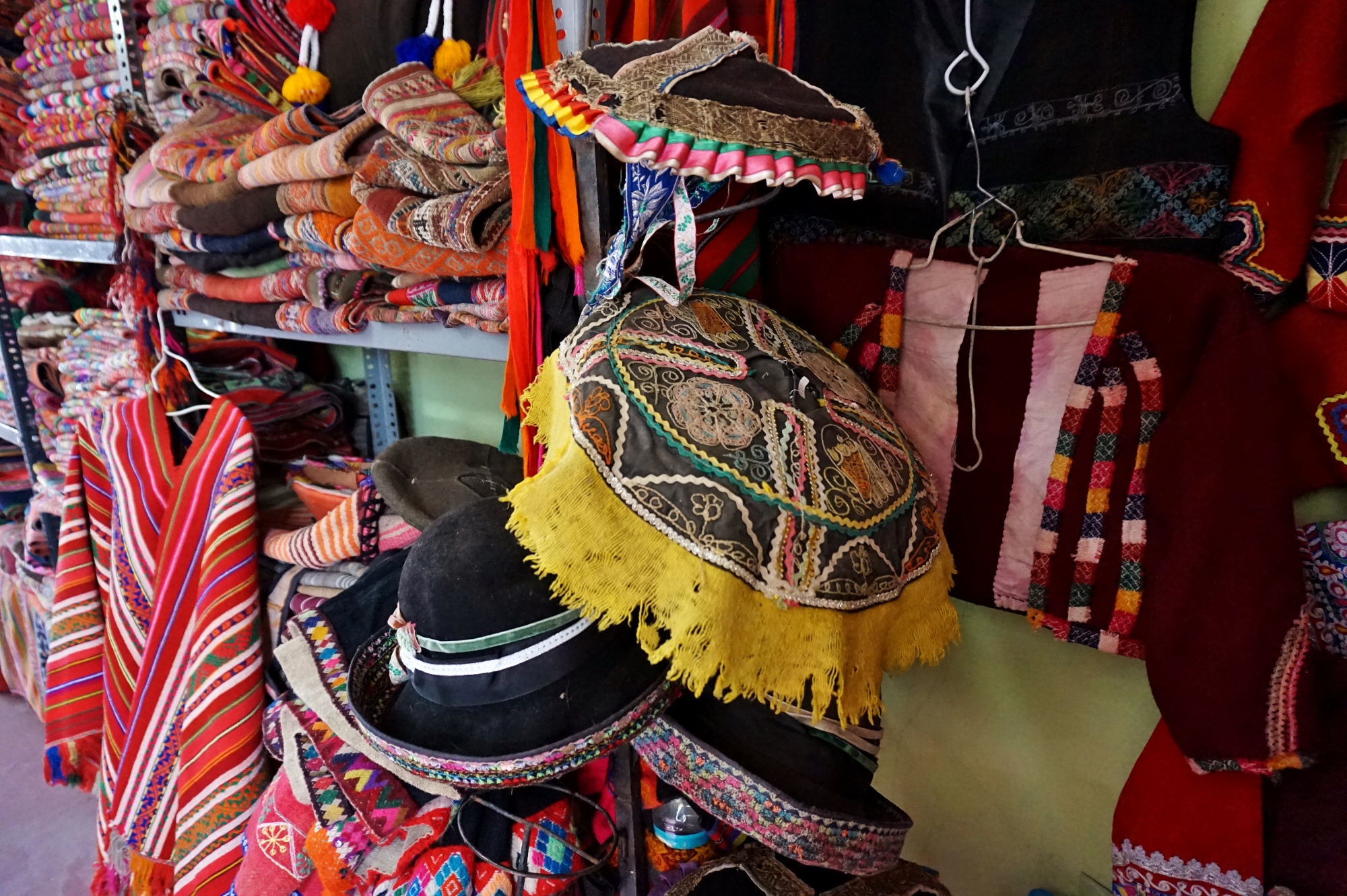OLLANTAYTAMBO & PISAC

We were up and out fairly early to catch our train back to Ollantaytambo. It was about 8am when we left our hotel and the queue for the bus up to Machu Picchu was almost at our window, which is twice as long as when we joined it at 4:45am the day before. We had a final stroll around Aguas Caliente nestled in between its many sheer mountains, then boarded our train. It was the cheapest option and was not much different to the next class up. Save your money I say.
Ollantaytambo was as picturesque as we remembered. After a breakfast in Heat Cafe (expensive but recommended if you are craving something that vaguely resembles an English breakfast) with a view of the ruins and many stray dog friends, we started to explore the maze of narrow cobbled streets that lead away from the main square. This place hasn't changed that much in centuries, the sound of bubbling water trickling through the incredible Inca irrigation channels really made us feel we had stepped back in time.
Down a narrow alleyway we found a promising doorway belonging to Mi Legado Hostel, which lead out into a rustic courtyard. The whole place was a bit lopsided and every where you walked, sat or stood seemed to creek. In a nut shell it had loads of character and from the second floor balcony that overlooked the courtyard you could see the ruins of abandoned Inca storage houses built into a sheer mountain side. A young lad called Evan showed us around and we settled on 50soles with breakfast (£12).
Below the staircase was a little stone hutch, home to four or five guinea pigs. There were also two babies just one day old. I warned H not to get too attached as I planned to eat one when we got back to Cusco. They are a delicacy here, eaten at special occasions.
As we were close to Pinkuylluna ruins a couple of lanes away we decided to spend the rest of the morning hiking up to them. The path was steep but relatively short and soon we were at the ruins that we could see from the balcony.
These ruins were used for food storage. Many crops would be dried and stored up here with the cold winds blowing through the big open windows keeping produce dry and cool.
We hiked up higher on an even steeper path until we reached some more ruins with a fantastic view over the town and of the Ollantaytambo fortress. If anything the view is better from here than from the fortress as the mountain we were now on ain't much of a looker.
Dark clouds were gathering down the valley so we finished our little loop past a few more weather beaten buildings and headed back home. We made it back just as the heavens opened. Luckily it was time for a cup of tea and an afternoon nap.
We woke a bit later after the rains had past and tried to reuse our ticket to enter the fortress. (When visiting sites in the sacred valley you buy one ticket for 130soles (£32) which gets you in to fifteen different sites only once. Upon entry the guard hole punches your ticket in the appropriate box.) The guard rightly tried to deny us entry for this reason, but then out of nowhere H managed her best Spanish white lie! She said something along the lines of 'we left to get food and now have returned' the guard apologised and off we went. We didn't climb to the sun temple like last time, instead followed a sheer path along the cliffs to some more terraces and storage buildings.
In the flood plain below were some really clever stone channels that diverted water from the stream to bathing areas, a water temple and some small natural fountains. It was genius!
In the evening we had some beers on a balcony that overlooked the main square. The sign claimed it was an English pub and it surprisingly served Abbot Ale and Old Speckled Hen (Interested Malcolm?). Tuk Tuks hurtled about on the cobbles below like go-carts whilst large-lunged police men whistled them on. Three little old ladies set up Chicha stands along the pavement and two young girls in traditional dress played hopscotch on imaginary squares.
The lampposts here are really interesting, they depict the three gods of each realm. The condor rules the heavens, the puma rules the earth and the snake rules the underworld.
Evan served us breakfast on the balcony in the morning. It was nice looking up at where we hiked the day before even if my calfs were still burning.
We checked out and found the local bus stop just off the main square. Our plan was to visit Pisac market two hours and two buses down the valley. The first cost us 35p each and drove us to the town of Urubamba, then we boarded a bigger bus for 75p each the rest of the way to Pisac. The only downside to the local buses was they would only leave once they were full, no matter how many times the locals protested with shouts of "Vamos" (lets go). Luckily we had tonnes of time and didn't have to wait too long.
Pisac is another pretty little town with a maze of rustic lanes at the foot of the mountains. Unlike Ollantaytambo, Pisac has a bit of a hippy vibe. In amongst the fruit, veg and textiles shops were vegan cafes and shops selling crystals and potions to connect you with yourself and Mother Earth etc. It seems like some gringos came and got stuck here. Still it was a charming place. The market in the main square spilled out into the narrow side streets.
Many of the stalls sold the same old stuff, llama wool socks and hats, colourful blankets, bracelets, and ornaments. However there was also a whole produce section full of locals going about day to day life, and this was much more interesting. Women in multicoloured skirts and hats merged with piles of multicoloured fruit and veg.
Without warning a procession of boys and men in age order wearing bright hats and ponchos walked through the market blowing concha shells. We found a balcony with a great vantage point for people watching and took it all in.
Hidden away at the top of the market, where I doubt many people actually make it to, we found a shop with some very ancient looking traditional garments. The skirts are made of metres and metres of heavy black wool, gathered in at the waist and would have been hand embroidered back in the day. They are extremely full and extremely heavy and have to be tied onto the wearer with a thick cord. Little embroidered waistcoats lined the walls, as well as many different types of traditional hats. Helen was in fashion research heaven.
We made it back to Cusco in the early afternoon. Glad to be back in familiar territory but surprised that we were again out of breath. Three days 900m below Cusco had taken its toll and it seemed we had undone all our hard work acclimatising. At least we had an excuse to do very little for the rest of the day.

